Blog
March 5th, 2011
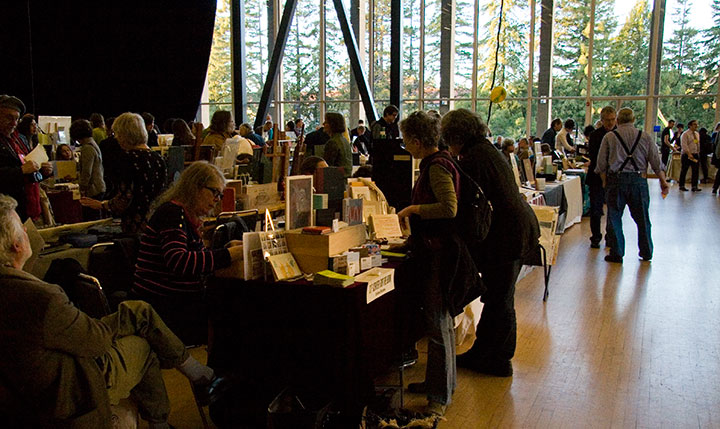
You know, I spent the whole time I was at Codex just trying to process everything around me. I thought the few weeks since that I’ve been telling stories and rehashing memories would make it easier to sort it out in my mind, but I still just can’t seem to articulate the impressions bouncing around the inside of my skull.
It was just too big … too rich … too much.
Which probably explains why I never managed to get any decent photos. I was too busy standing there goggling at the enormity of it all to document the experience properly. It was all I could do just to man my own table and keep track of all the folks who stopped by to talk to me.

Let me backtrack a bit, and explain what all of this was about. For every discipline, subculture or interest group out there, there’s some sort of club, or society, or conference, or symposium, or bee, or knitting night, or comicon, or hot-dog-eating contest, or what-have-you—some organized gathering for like-minded people to get together and share what they do. If you can think of it, there’s probably a group of people meeting about it somewhere.
The trouble with the book arts is that our world is small and spread out. There aren’t too many of us who do this sort of thing in the first place, at least when compared to photographers, or children’s book writers, or web developers. And then within our little group, everybody follows such a different path that getting us together is like herding cats. We’re hard to pin down because there’s a whole universe in our little speck of dust. Printing, bookbinding, papermaking and typesetting are just the tip of the iceberg. Within each of those disciplines is an incredibly broad spectrum of different and often contradictory artists and art forms. And yet each of those fits comfortably, easily, infinitely under the same, paradoxically small umbrella of the book arts. (Now you know why I’m not great at elevator speeches.) If you tried to graph it out, you’d end up with either the world’s best or worst Venn Diagram—I can’t decide.
So because we run such a crazy gamut, we can’t be shoehorned in neatly with some other event, even though the “average” book artist can and probably does moonlight quite easily as a dozen other things. There’s no “book arts corner” at SXSW, or BlogHer, or the Venice Biennale. Exhibitions and summits dedicated entirely to the book arts are few and far between—large international events are rare, indeed. So for our lot, Codex is a big deal.
This year there were over 140 exhibitors at the book fair, representing artists in every conceivable discipline and style, and every corner of the globe. The exhibitors hailed from 20 states and over a dozen countries outside the U.S., including Russia, Germany, France, Israel, Colombia, Japan, Mexico and Canada.
And it isn’t just for artists: students, educators, private collectors, librarians, museum curators, conservators and archivists, hobbyists, publishers, supply vendors, gallery reps and dealers, bookstore owners, clubs and organizations, and every stripe of enthusiast were in attendance.
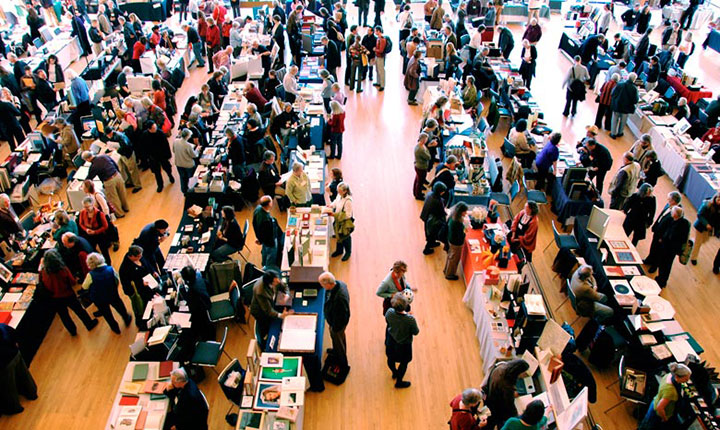
Photo courtesy of the Codex Foundation.
So yeah. Codex is huge.
It was both intimidating and inspiring. I was immediately and constantly confronted with my own insignificance (I kept imagining that at any moment, some cartoon alarm would go off—woop! woop! woop!—alerting everyone to the fact that I didn’t belong there)—yet at the same time, everyone I met was warm and welcoming.
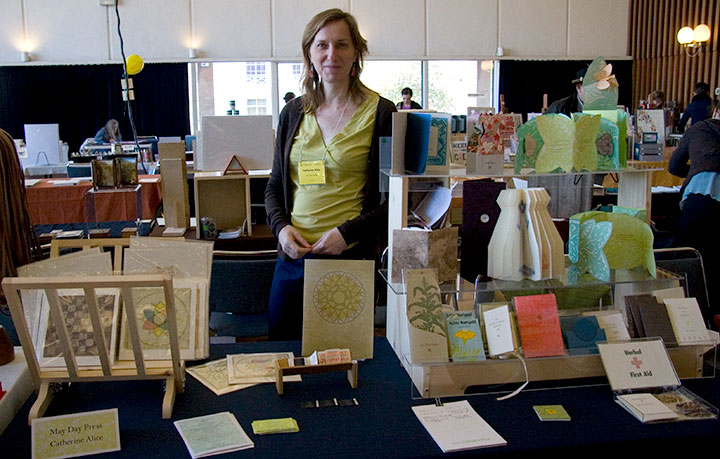
I had the chance to catch up with old friends, meet many of my long-admired art-heroes, and be introduced to a whole host of new faces.
But most of all, Codex was completely, utterly overwhelming. I had my brain cranked up into overdrive for four solid days. After meeting literally hundreds of people, answering thousands of questions, asking another thousand myself, handling many dozens of handmade books and artworks, absorbing new information and taking copious notes, and just being exposed to the ultimate sensory overload of it all—well, by the end, I was a deer in the headlights.
And I feel like I barely scratched the surface of what was there. Imagine that you’re visiting the Louvre, or the Smithsonian, or some other enormous museum. Only instead of picking and choosing which galleries and pieces to see, and making your way through room by room, you discover that every painting, every sculpture, every piece of art in the whole place is crammed into one huge hall—each with the artist who made it standing to the side, waiting to meet you and hear what you think. I’d go mad—I think I did go mad!
Everything I saw was phenomenal—it was hard not to just stand there, slack-jawed, struck dumb by the realization that there I was, in close proximity to some of the best work being done by anyone, anywhere.
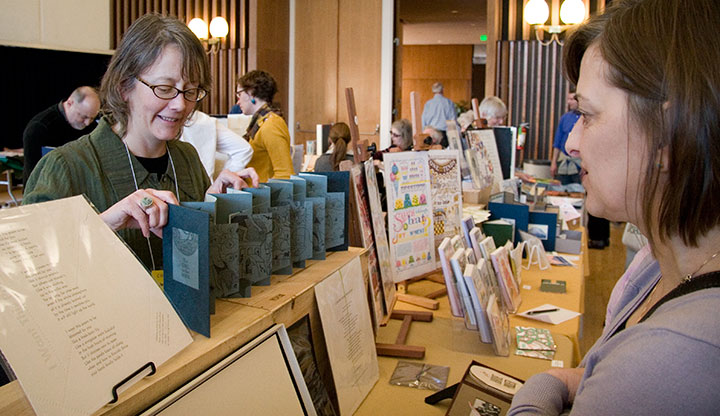
I could go on and on. And I’m sure there were a thousand other great things I never had a chance to see, because I also had a table to man. Jessica and I made the trip together (that’s her showing one of her books), and as we had adjacent tables—
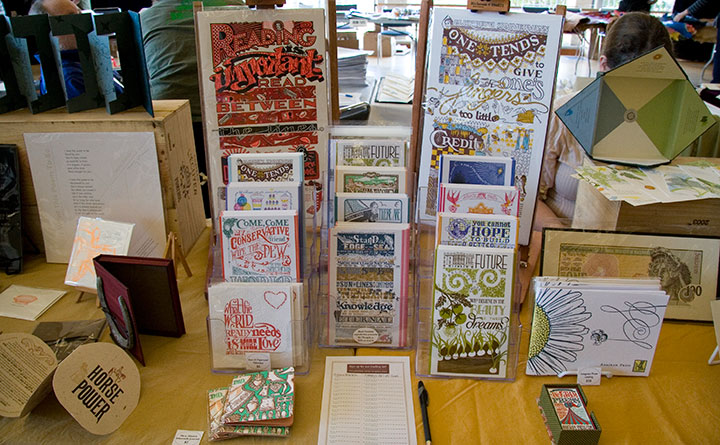
—we met in the middle with our Dead Feminists stuff between us.
Jessica’s done Codex once before, so she was prepared for the overwhelming onslaught of people. She suggested that we put together a letterpress-printed take-away catalog of our work so that after the fair, when everyone was just as dazed as I was, they’d have something to remember us by. (And that ended up being a great idea, and a big hit—we had tons of follow-up messages afterward, and we didn’t see anything like the catalog at the book fair.)
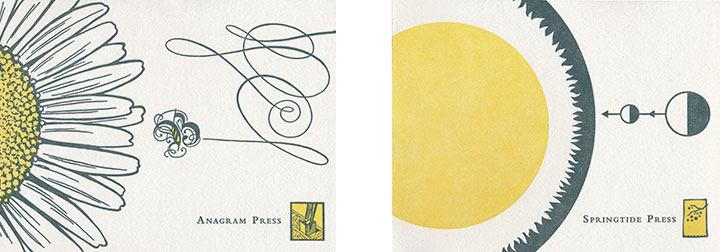
Since we collaborate on so many things, we decided to combine our efforts into one joint catalog—with a twist.
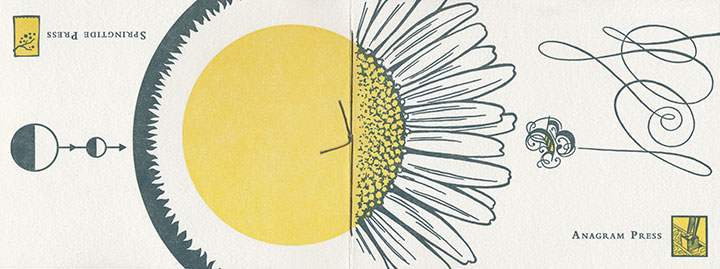
We figured we had an opportunity to clear up a little of the confusion over who does what around here, so we had fun playing with the design possibilities. Jessica came up with a flip-flop format, and I designed two covers that would come together at the spine to form a single image if laid flat.
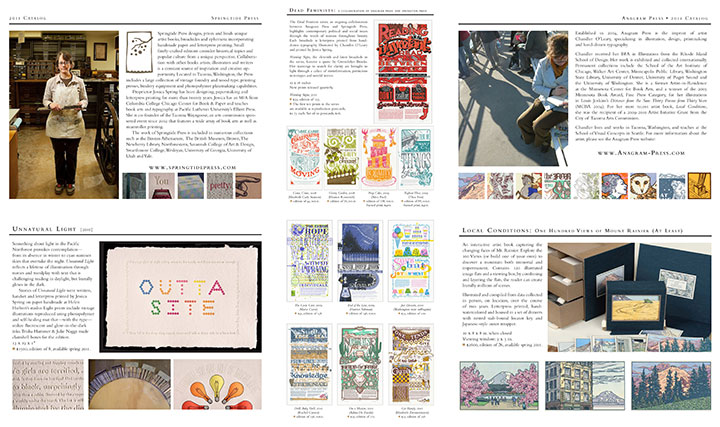
Held one way, you’d read her half of the catalog; flip it over and read from the back, and it becomes my half. We converged in the middle with a Dead Feminist “centerfold” (ha!).

For my part, the most gratifying part of Codex was watching a steady crowd playing with Local Conditions. The response people had to the book was both intensely gratifying and humbling—and it was wonderful to see that students, fellow artists, dealers, curators, professors and collectors were equally excited about it. But my favorite bit was being a bystander to all the different scenes people designed with the image flats.
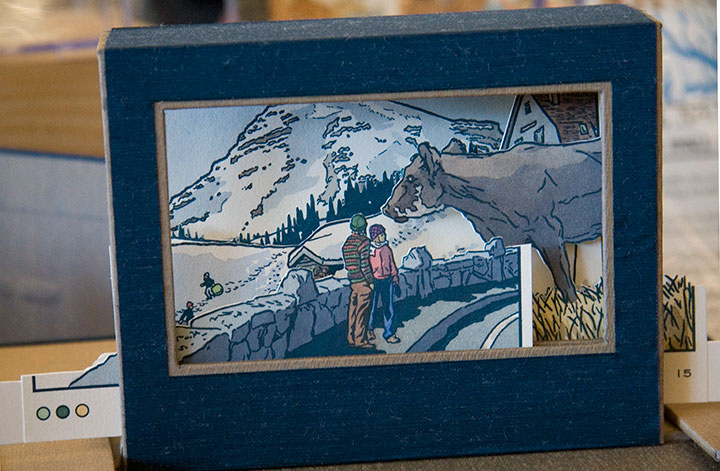
The cow completely stole the show there. It was hilarious to see how many times it turned up in a scene, either a fitting addition I hadn’t thought of—or as an absurdly out-of-place monster.
(Best of all was the cow that stood on the airplane wing and pretended to be a gremlin.)
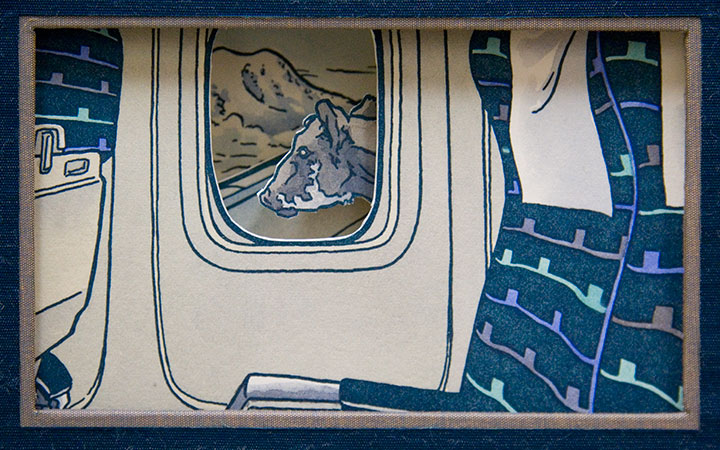
It’s hard to remember that we were in a city as fabulous as Berkeley—the folks at Codex had created a complete world just in that one room. (Though we did get out enough to discover that when the overstimulation had us in a daze, a hot-cookie ice cream sandwich down the street was just the ticket. Thank you, Berkeley!) The next fair is two years away, but I came home with what seemed like a decade’s worth of inspiration. And I find I’m already looking forward to Codex 2013—sensory overload and all.
Bring it on. I’ll be there.
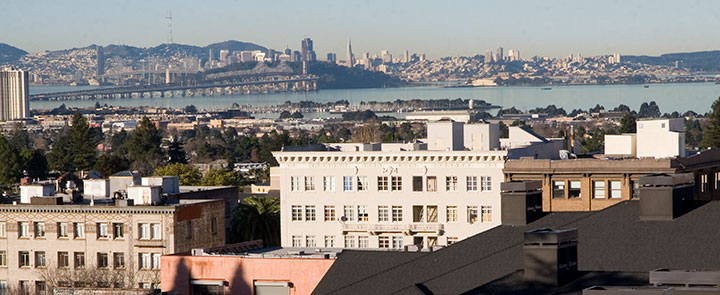
February 17th, 2011
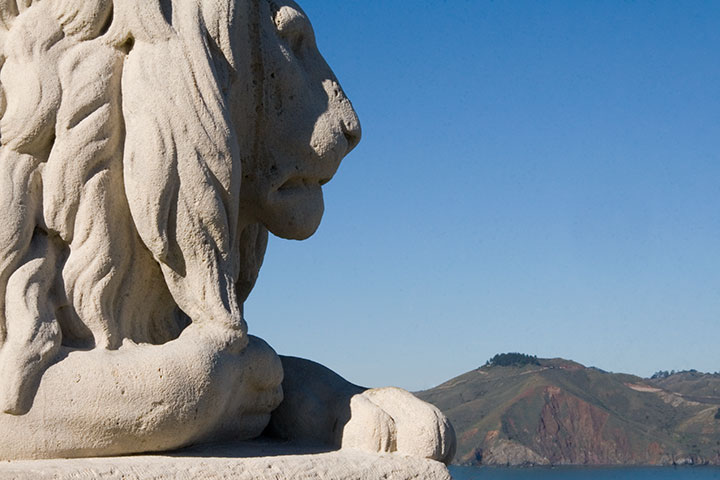
After thirteen days and 2,382 miles on the road, I’m finally home in the real world again. And that’s exactly how it feels—like I’ve been in a land of make-believe for the past two weeks. A place of impossible landscapes and endless shorelines and absolutely no connection to things like phones and computers and deadlines and to-do lists.
Now that I’ve washed back ashore, however, there are photos to edit and sketches to scan before I can tell you about it. In the meantime, Jessica and I have a schedule to keep: as advertised, our next Dead Feminist broadside is back from Codex and ready to share. Look for it here and in the shop tomorrow.
See you then!
February 11th, 2011

Going A.W.O.L. from the studio can be a very good thing—especially when this is the destination.

I’m here to spend some time with these folks,
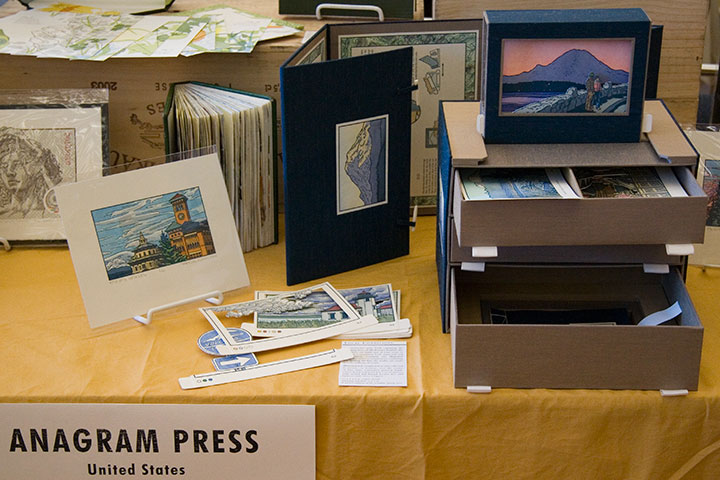
for the sake of this.
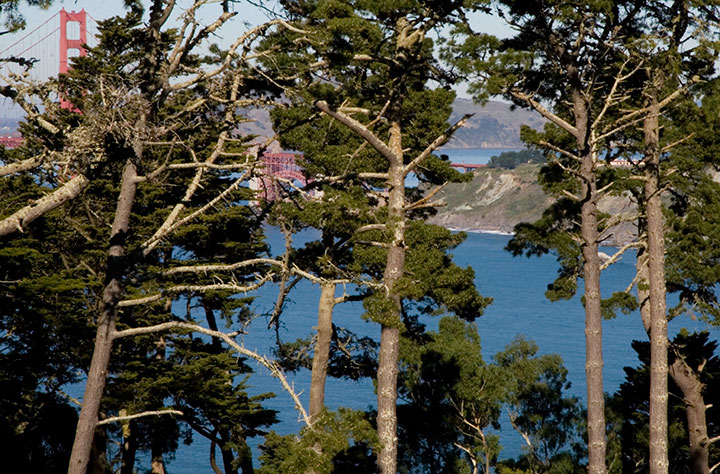
But the “work” part of my trip is done now, so I spent today up here.
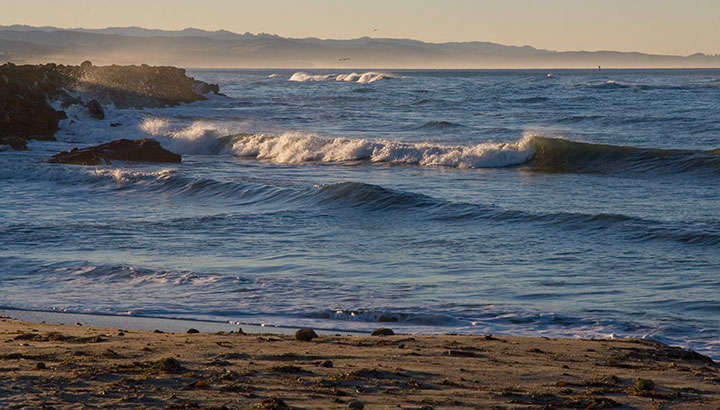
And tomorrow I’m leaving for home, but I’ll be taking the long road, by way of this.
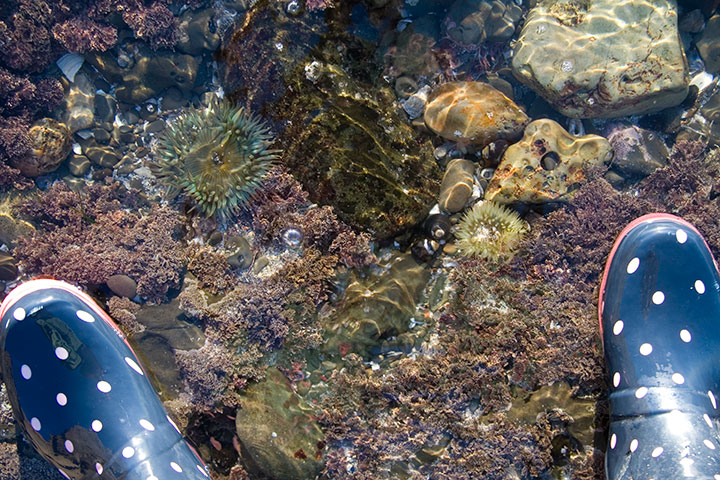
The goal is to take as much time as possible for things like these,
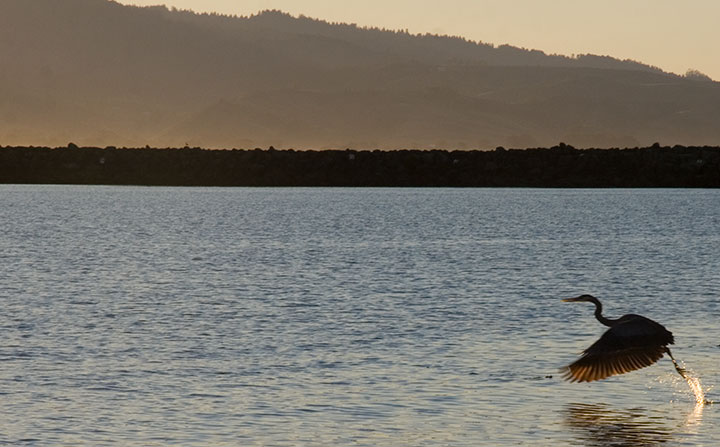
and for moments like this.
I promise to share when I get home and have access to a computer again. See you on the other end of the trail.
December 13th, 2010
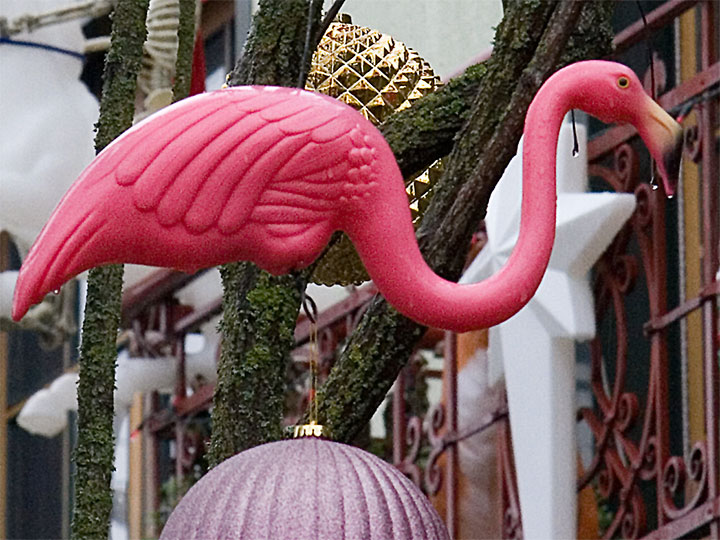
One of the nerdy things I love most in the world is “collecting” regional nicknames for weather systems. I’ve lived in a lot of different places, and have first-hand experience with such things as the Nor’easter, the Albuquerque Low, the Alberta Clipper, and Blood Rain (which, I’ll admit, is as freaky as the name; watching rust-colored droplets fall from the sky and stain every surface—including you—is a disturbing experience).
Here we get the occasional visit from the Pineapple Express—a holiday guest from the South Pacific that overstays its welcome and eats everything in your fridge. And it thanks you with the gift of a warm bath—a gift that keeps on giving: namely, torrential rains, washed-out roads and rails, snowmelt at all but the very highest elevations, and areas of flooding which include, right at this very moment, our basement. (Not to worry; for us, at least, the rain trickles in, gathers in an interesting map of puddles, and trickles back out again when the storm subsides. And for all the well-meaning people who offer us unsolicited remodeling advice, it serves as an excellent illustration of our resolve never to have a finished basement.)
Anyway, while I concede that it made the drive more … er, interesting, the Pineapple Express served as an oddly fitting companion on my trip to Portland yesterday.

For one thing, it gave sudden and perfect context to one hilarious interpretation of a Christmas tree.
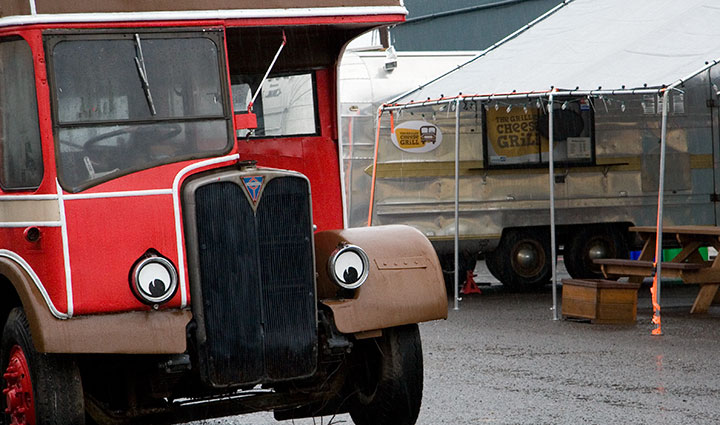
It made the bright spots glow—
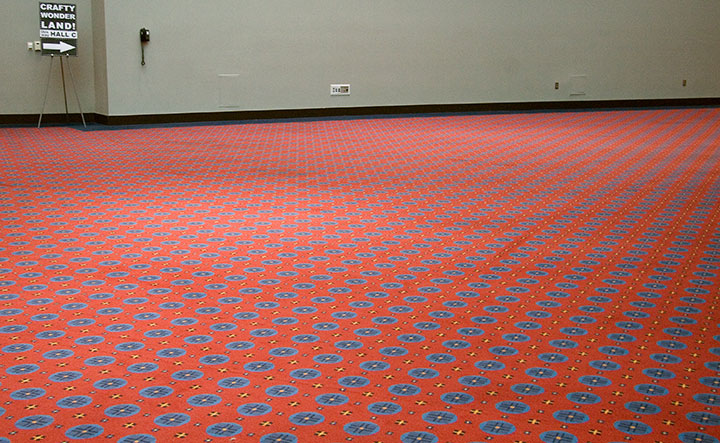
and turned even the most nauseating corporate decor into a sea of color.
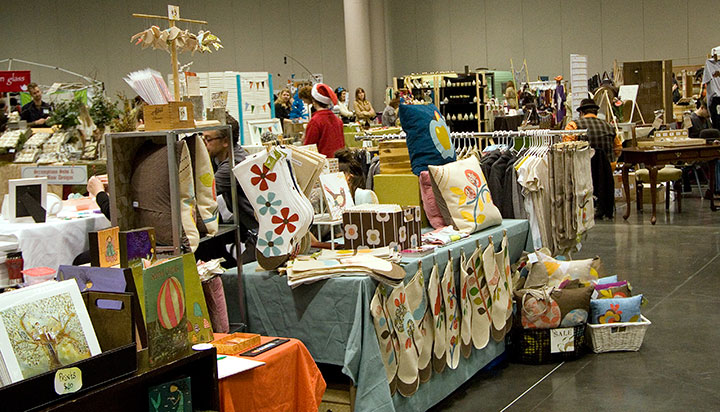
It got the old mental wheels turning by inviting me indoors, from a dose of crafty goodness,

to an entire museum devoted to another kind of craftiness.
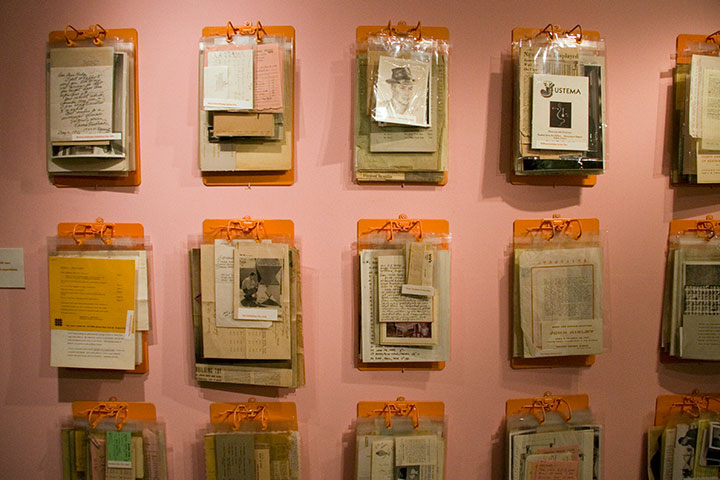
And with nothing but a soggy hike waiting outside, it inspired me to take my time and have a good, long look at what I found.
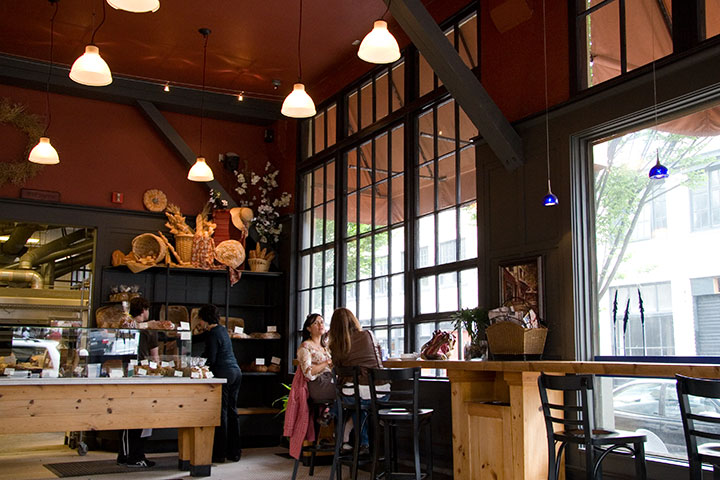
It encouraged me to visit a favorite bakery—
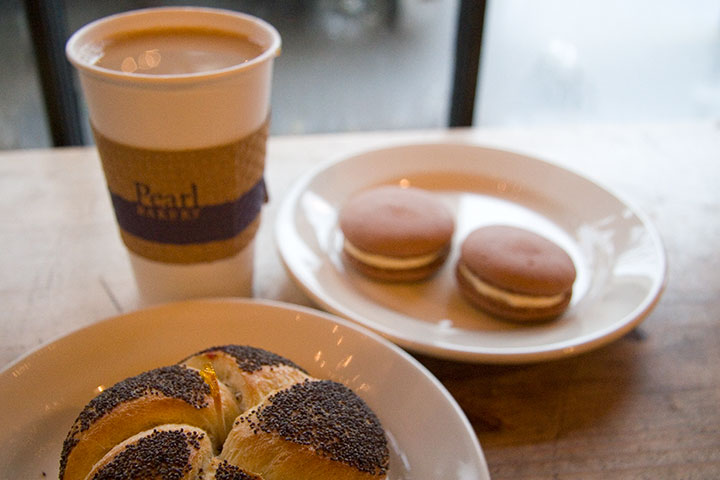
—and warm up over a well-rounded lunch (sorry).
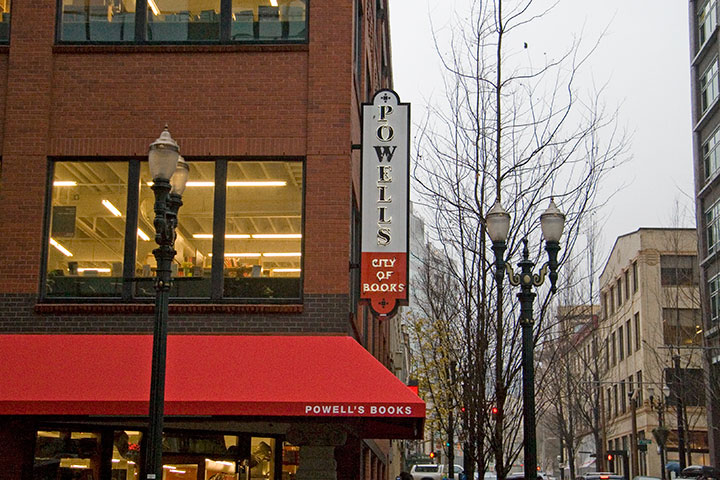
It gave me an excuse to duck into the best bookstore in the entire universe.
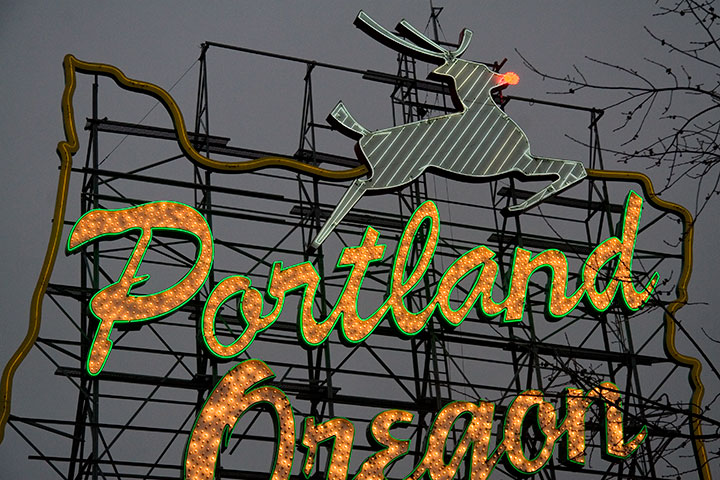
And just as daylight waned, it helped a certain somebody’s nose glow oh-so-bright.
Oh, and then, as I walked back to my car for the drive home, it made this song pop into my head. After all, paddling home in a canoe might have been a little more efficient!
September 8th, 2010
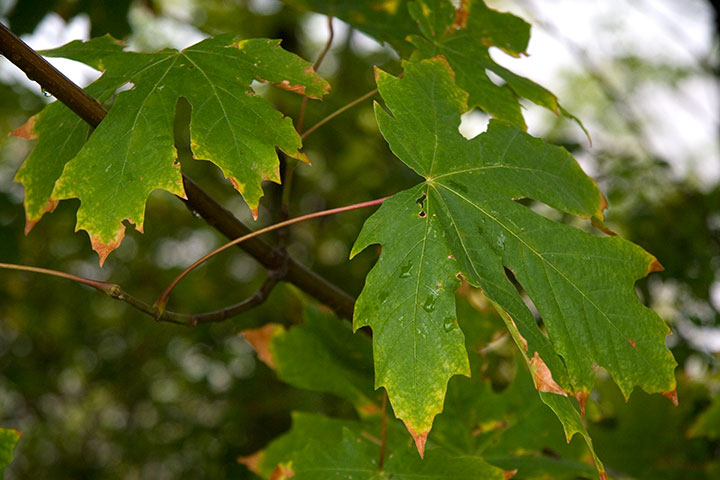
Judging by the chilly rain that’s suddenly arrived, the rapidly diminishing daylight and the maples that are already starting to turn, summer is officially over. But maybe it’s all those years I spent going to the Minnesota State Fair, because the end of summer has always got me dreaming of still-hot days and fried food on a stick—and I find myself handing out metaphorical blue and red ribbons to the winners of nonexistent competitions.

Take, for example, yesterday morning, when I had to return some library books to the Kitsap Regional Library. Since I could visit any library in the system to do it, I picked a branch in a town I had never yet visited: Poulsbo (pronounced “Paul’s Boh”).
To kill a few minutes before the library opened, I parked the car next to a waterfront park, and took a stroll along the boardwalk that extended toward the center of town. I have no idea what I was expecting to find at the end of the boardwalk—
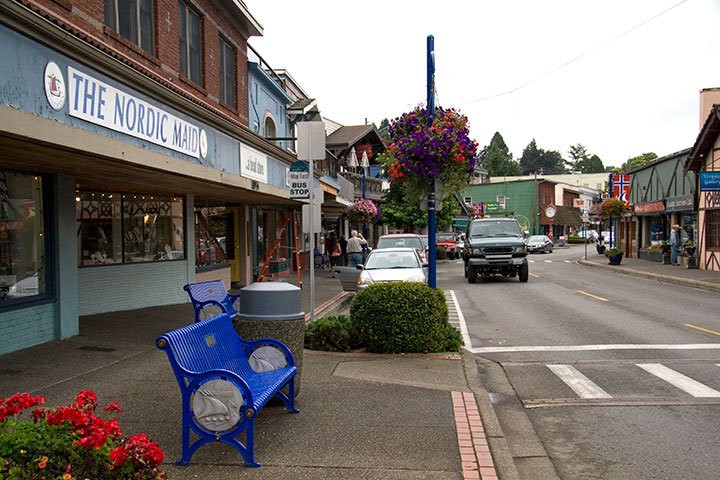
but it certainly wasn’t anything quite this adorable.
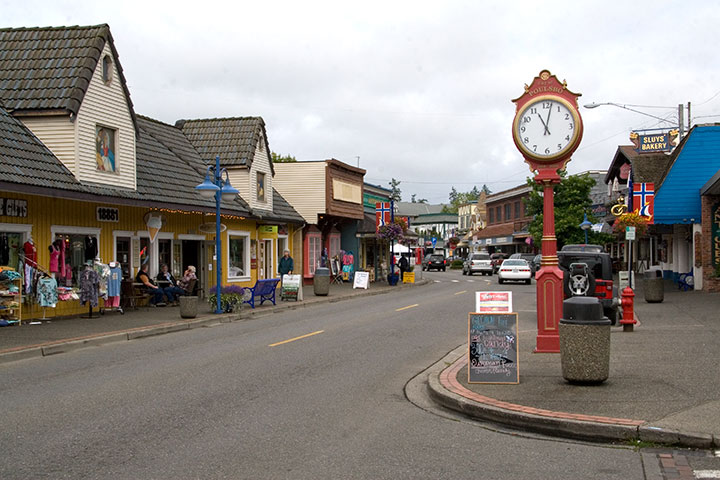
Tucked away on a fjordy arm of the Sound, Poulsbo was settled in the 1880s by Scandinavian immigrants (the ones who didn’t stay in Minnesota to start up the State Fair, that is).
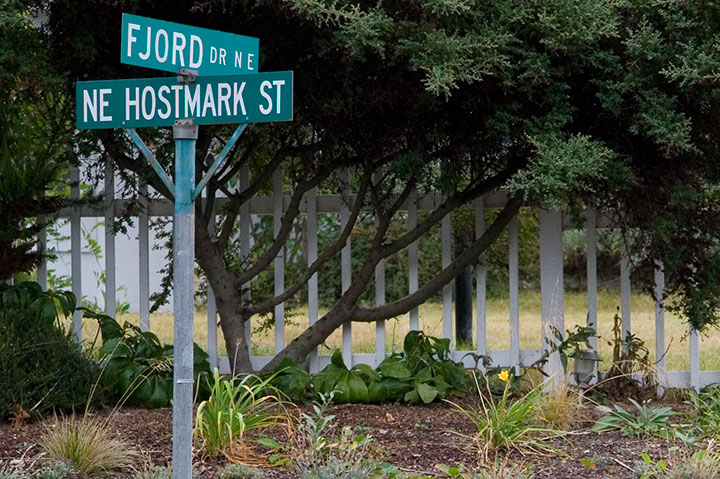
And it’s been a little piece of Norway ever since. In fact, Norwegian was the primary language here until World War II; and even yesterday, I swear on my own grave that I overheard a conversation in Norwegian. Hey, I didn’t live in both Minnesota and North Dakota for nothing—my friend Bridget would be proud of me for picking out all the “jeg“s and “er“s and “av“s she taught me long ago.
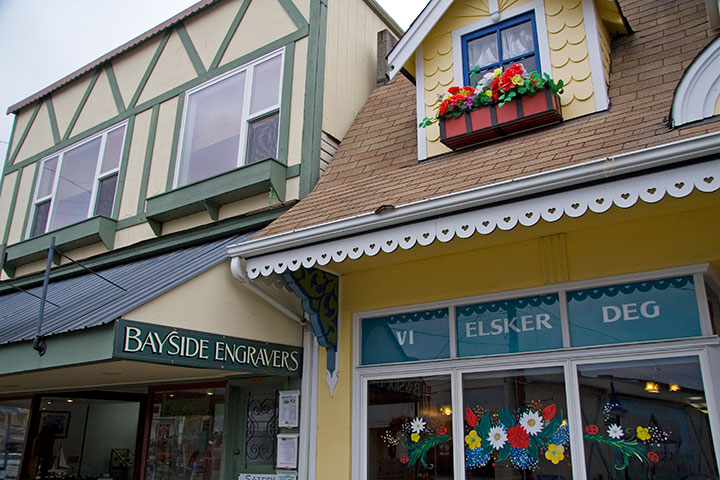
So Poulsbo gets a blue ribbon for charm and gratuitous outdoor use of Norsk.
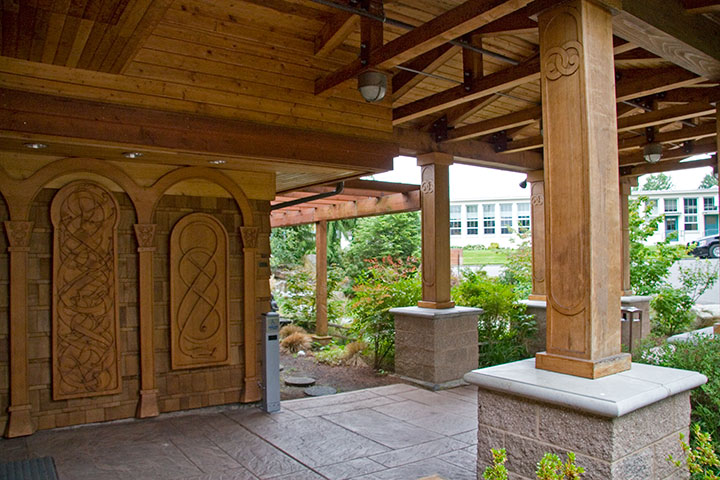
Eventually I remembered what I was there for in the first place—and then, when I laid eyes on the carved pillars and intricate paneling, I had to make sure I had written down the correct address. I think it’s safe to say that Poulsbo has also netted the Most Beautiful Library ribbon—

aaaand another blue for Cutest-as-a-Button church steeple.
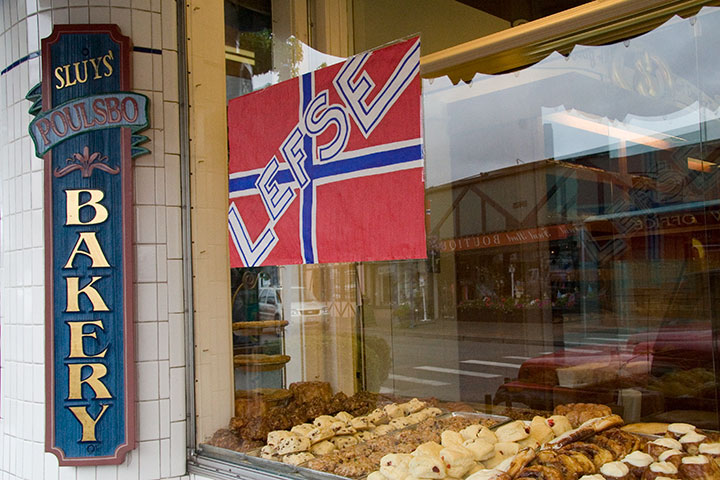
Before I headed for home, I walked the rest of Front Street—and stopped dead when I saw this sign. I don’t have a drop of Norwegian blood in my veins, but I do know my way around a Norse bakery.
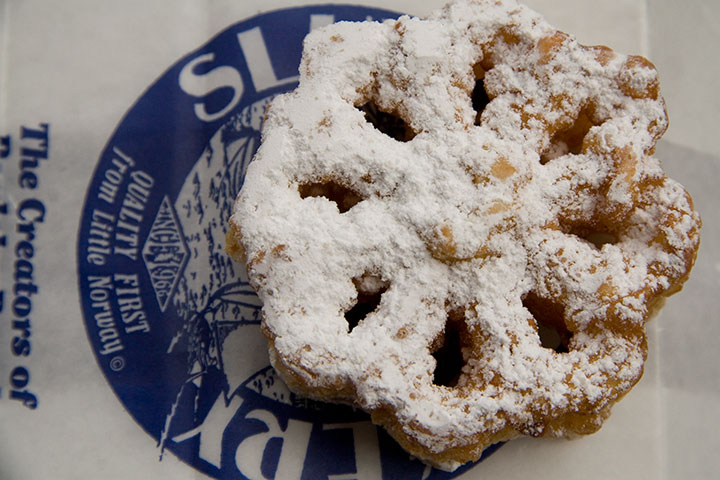
Lefse wasn’t on the menu that day, but I did find the perfect treat for my State Fair state of mind. Oh, yes. Another blue ribbon.
What can I say? Poulsbo knows the ways to my heart.

August 21st, 2010
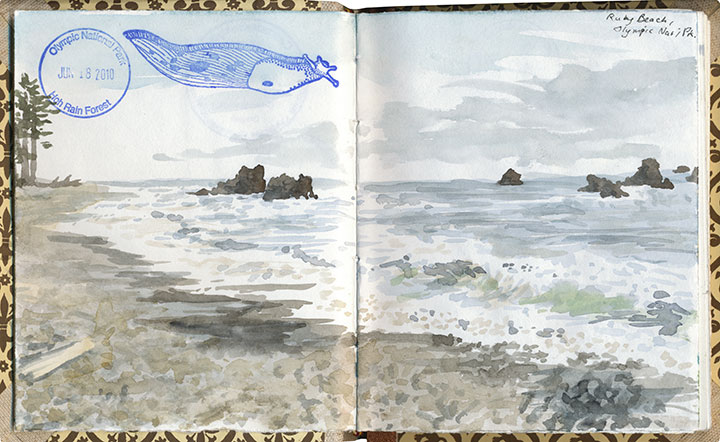
Since I posted this drawing and some others this summer, people have been asking me what’s with the stamps in my sketchbook. I guess the short answer is that each one is a little piece of personal tradition.
But you know I don’t really do short answers.
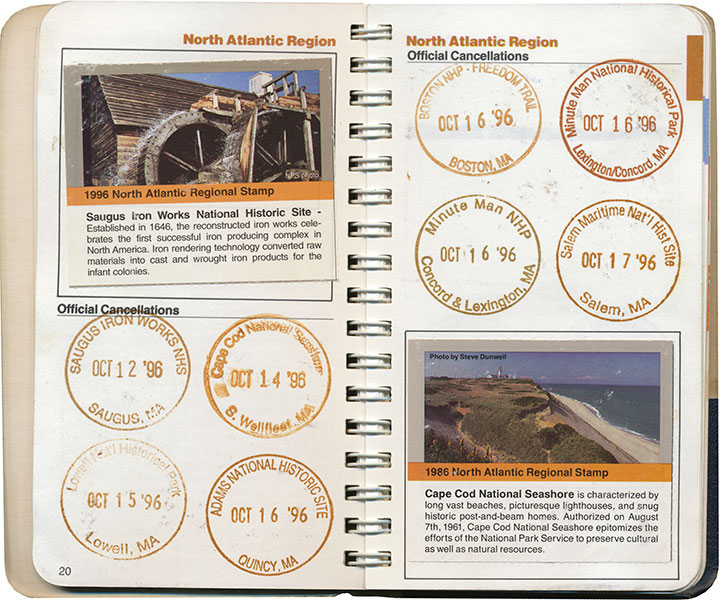
The long one, then.
I grew up in a nomadic family. Between the moves required by Dad’s job in the Air Force and a fierce wanderlust that runs in all the O’Leary veins, we had a lot of reasons to travel. Dad and I, especially, would spend hours poring over our dog-eared Rand McNally road atlas, plotting routes over the back-est of back roads (the squigglier the line on the map, the better) and stops at as many points of interests as we could cram into a journey from A to B.
When I was ten, we made a circuit of our then-home state of Colorado, and devoted our time to exploring every national park and monument we could reach along the loop. At each park’s visitor center, we noticed a rubber stamp and ink pad stationed at the front desk. When we finally asked a ranger what they were for, she handed us a small blue notebook and proceeded to explain about the National Park Service’s Passport program.
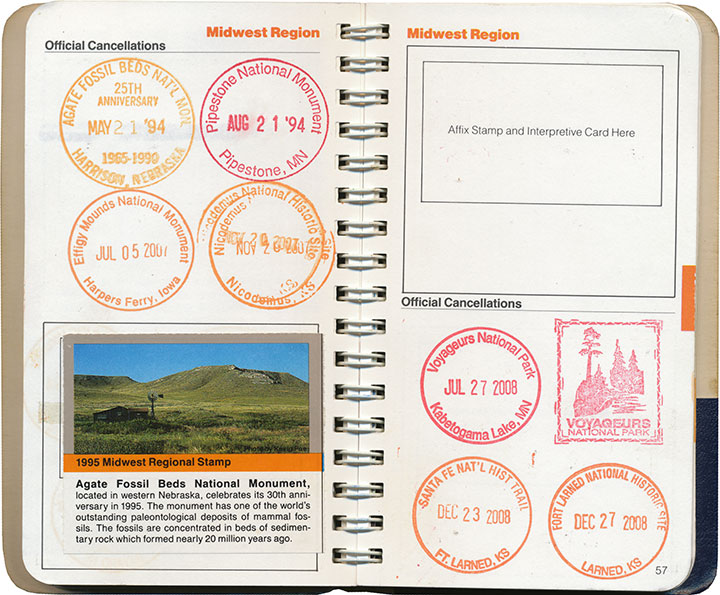
A stamp to collect at every NPS property in the country, and a tidy little book to hold them all? I was hooked.
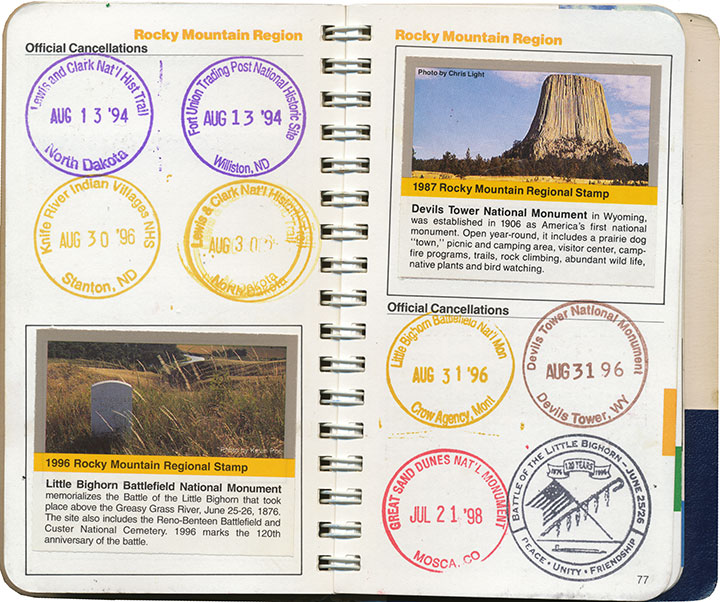
Dad and I found ways to sneak a national monument or two into every road trip and relocation—and even took impromptu vacations just to add a new park to the list. My favorite memory is when I was in high school, and Dad popped his head into my room:
“Have any plans this weekend?”
“Uh, no…”
“Wanna go to Montana?”
So we jumped in the car and drove 600 miles just to flip General Custer the bird at Little Bighorn (I had just read Bury My Heart at Wounded Knee, so he wasn’t exactly stirring me to patriotism). I mean, if you’re going to do it, you might as well go all out, after all. And we had the stamp to commemorate the moment.
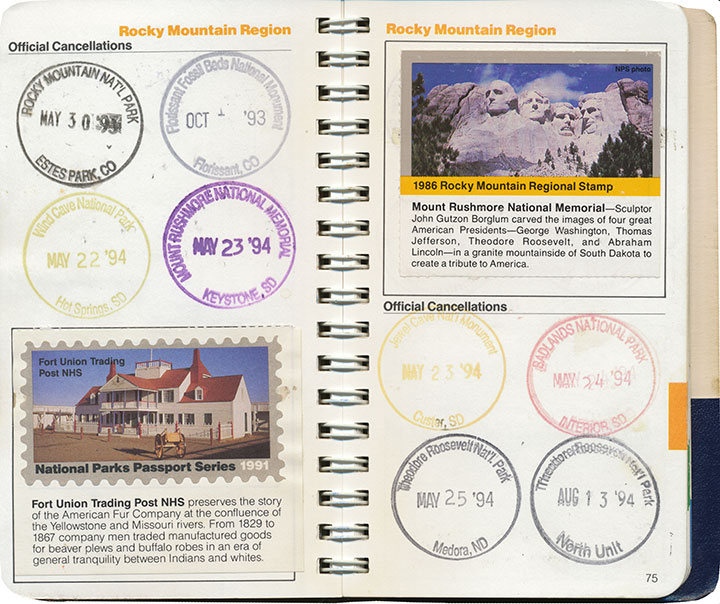
The Passport program also includes collectible paper stamps, which can be purchased from afar (as opposed to the ink cancellations, which are free but can only be obtained in person). I’m pretty lukewarm about these, though; by the time I jumped on the bandwagon they had already phased out the super-cool two-piece design pictured in the lower left corner above, in favor of the cheaper, lower-quality one-piece stamp in the upper right. Since those have been revamped yet again into a pressure-adhesive sticker—and who knows what heinously non-archival chemicals might be in the glue—I’m even less of a completist about them now.
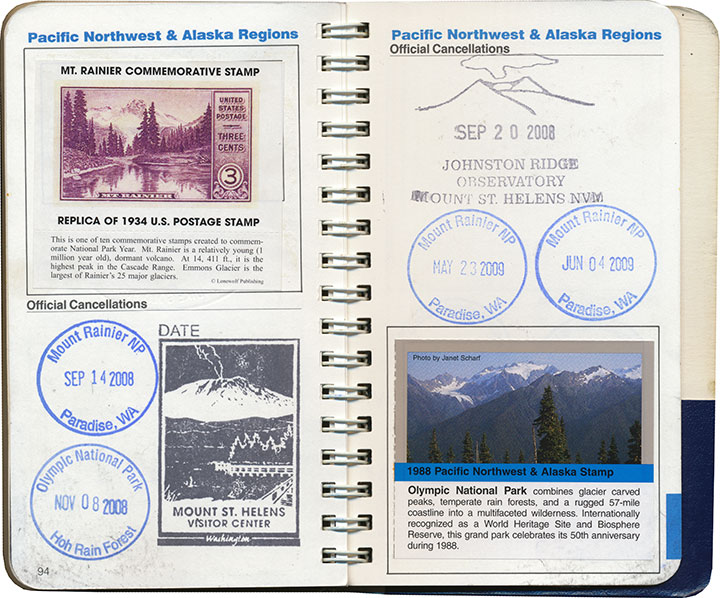
Anyway, I’ve burned through most of the regional sections in my Passport,
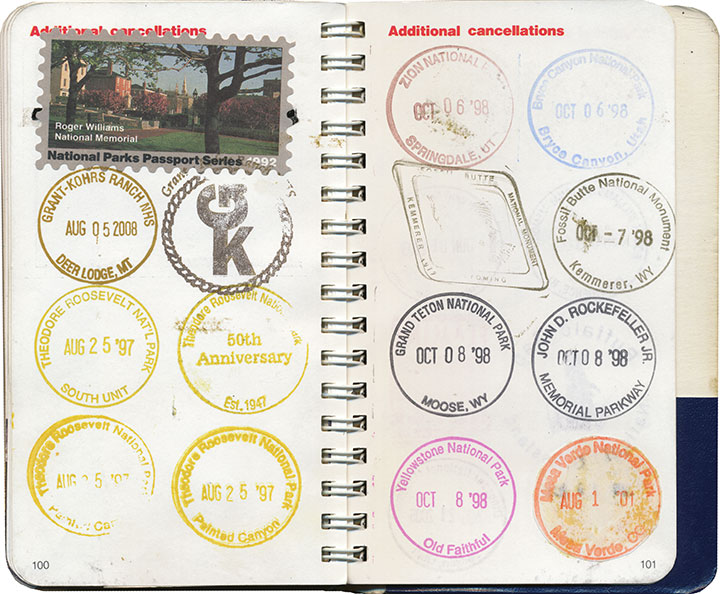
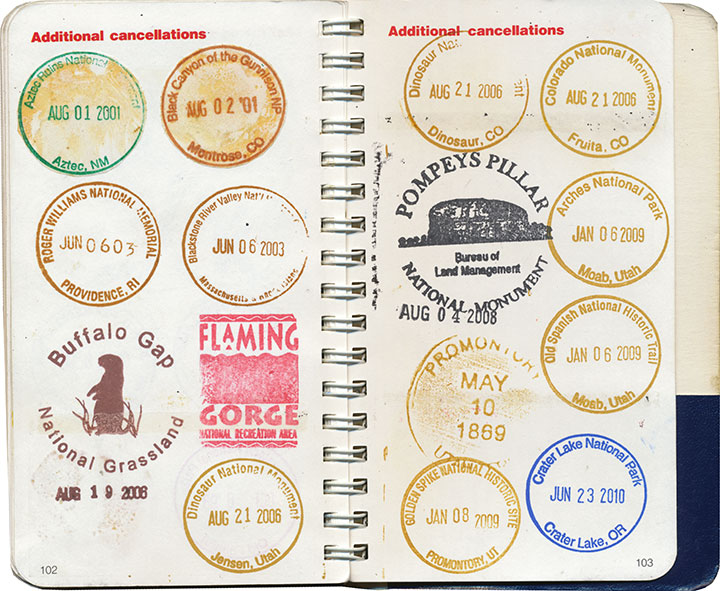
and every inch of overflow space.
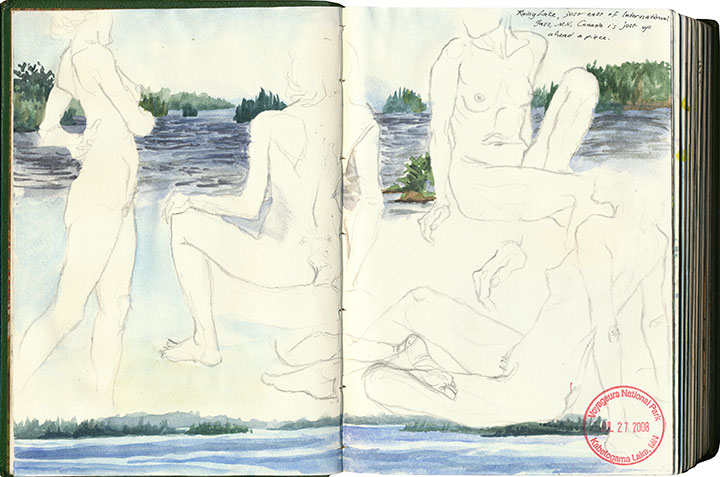
So I’ve branched out a bit.
What I didn’t know as a kid was that my Passport helped me develop my interest in nearly everything I love most: traveling, design, archiving, printmaking, history, typography, bookmaking, and so on.
At some point along the way, I realized that what I really mattered to me (beyond the travel itself) was the act of adding to an ongoing work—and then looking back to see what I had accomplished. That what I had been doing all along, by compiling this little individual history, is creating some form of artist book. And that my frustrations over an imperfect format were really a desire to create my own.
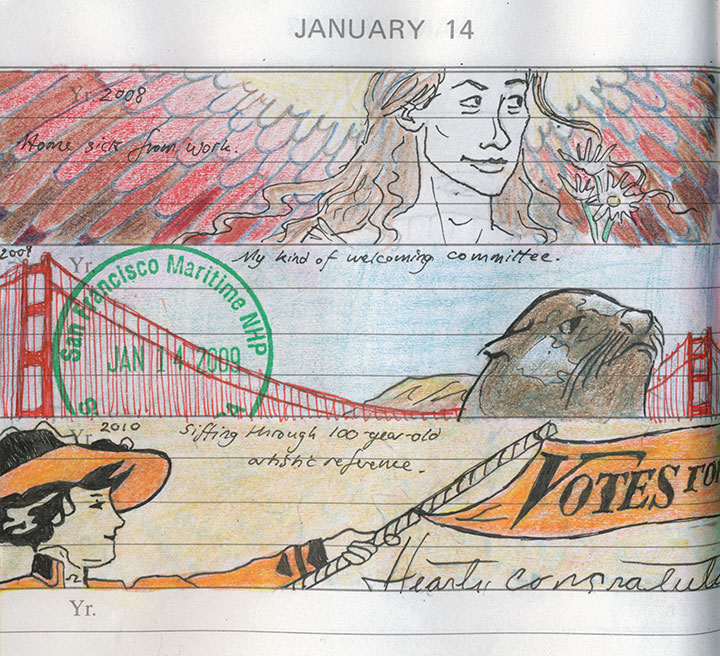
A page from my daily book—more on that here.
So now all of my sketchbooks are Passports, each custom-tailored—
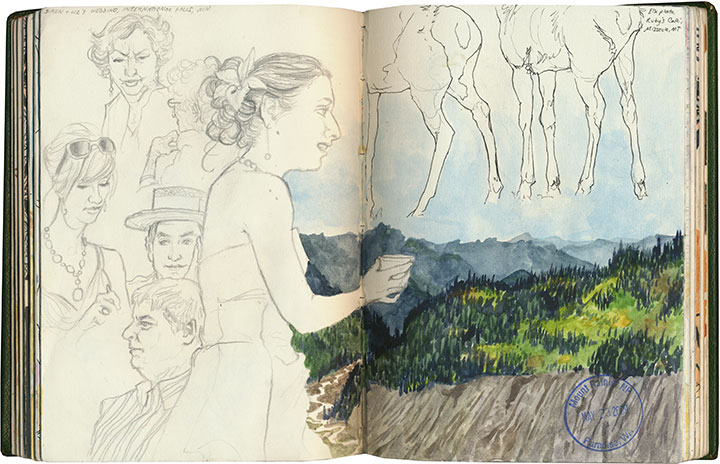
each infinitely flexible, ready for whatever adventures wait to be documented.

Here it is, nearly twenty years later, and I’m as eager as ever. Moreover, it’s my goal to collect every last cancellation within the entire National Park System before I stamp the big passport book in the sky. I’m about a quarter of the way there.
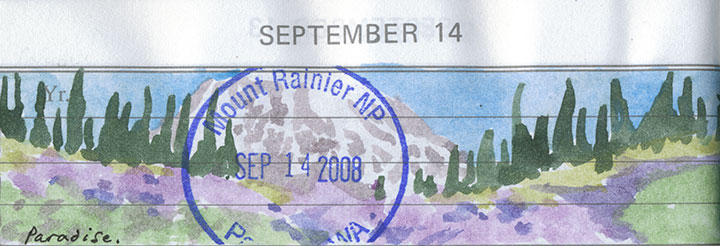
And I’ll probably have to build a library for all the sketchbooks I’ll fill between now and then.
Save
August 15th, 2010
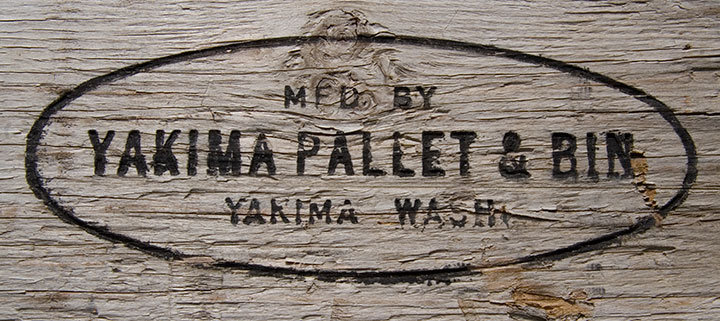
Earlier this month, my best friend Elizabeth flew in for a visit. Each time she’s come to town I’ve taken her to see a different part of the state—and since we’re in the middle of fruit season, this time we headed for the Yakima Valley.
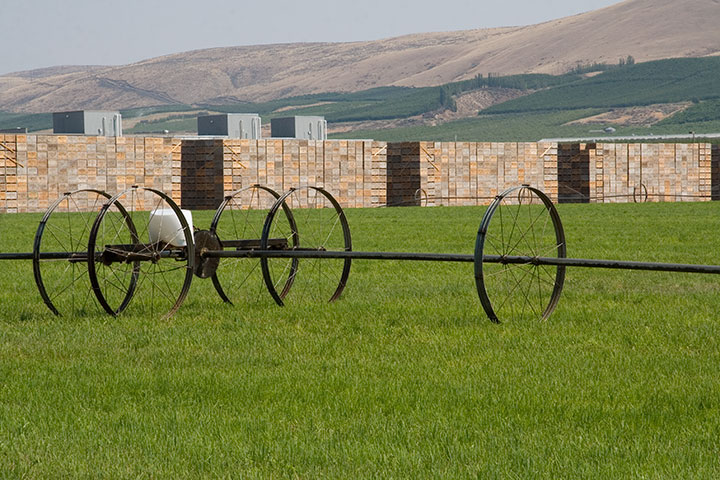
At this time of year, the roadsides are piled high with apple crates,
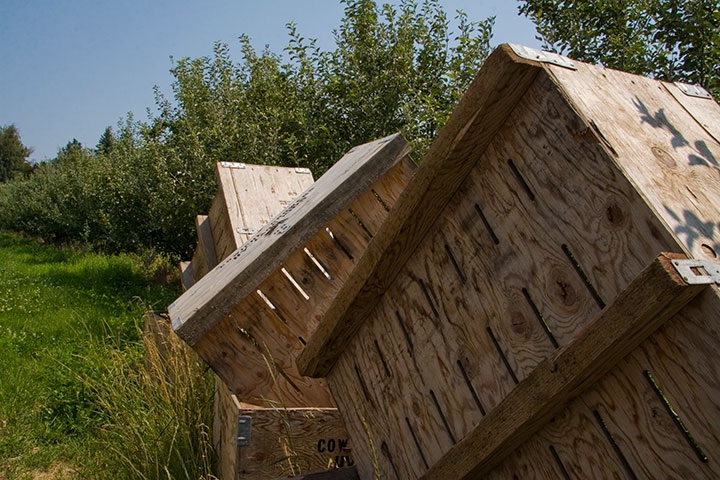
ready for the harvest that will begin in a few weeks.
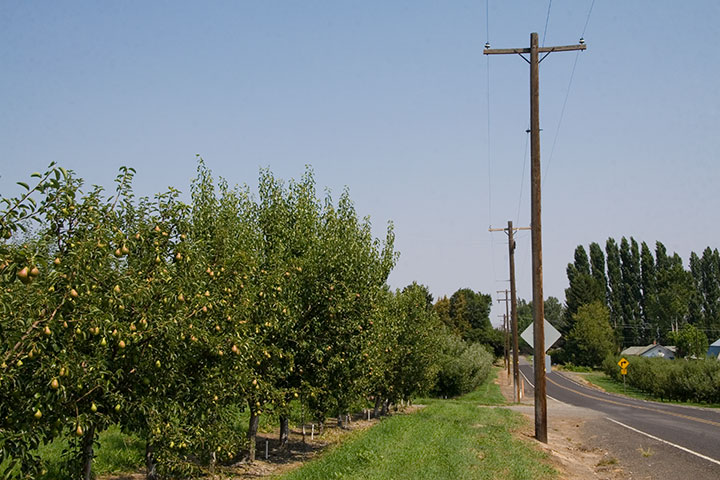
The pears seem to be a little closer—

they’re ripening quite nicely.
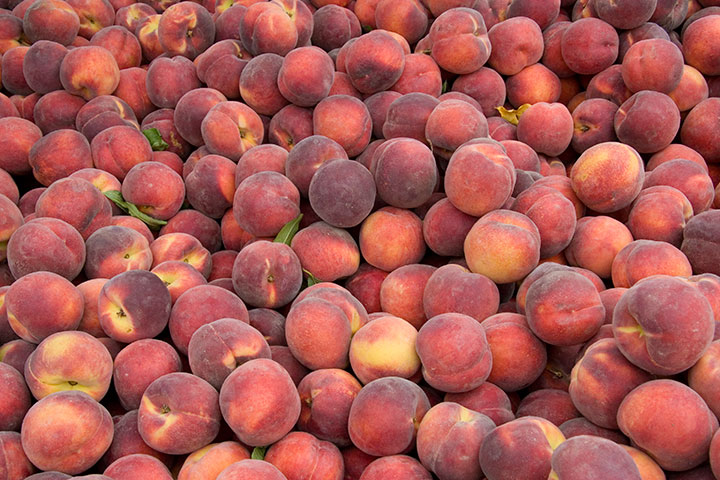
Right now, though, it’s peach season. The Tailor sent us on an errand for as much preserve-ready fruit as we could get our hands on—so I took him literally and brought home fifty pounds of Regina peaches,
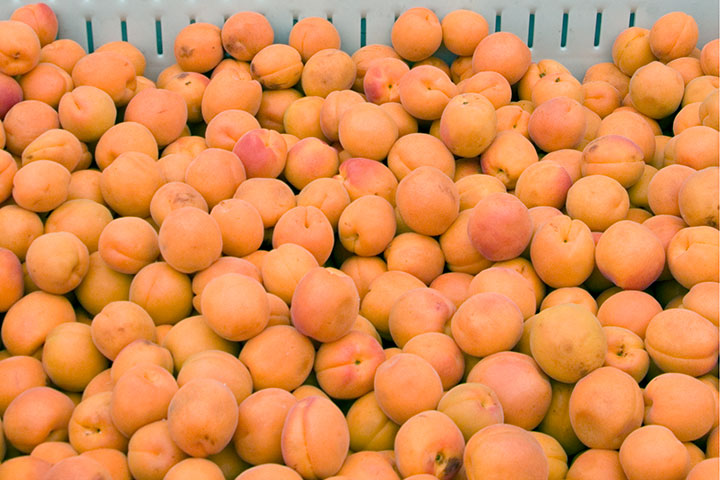
another fifty of Rival apricots,
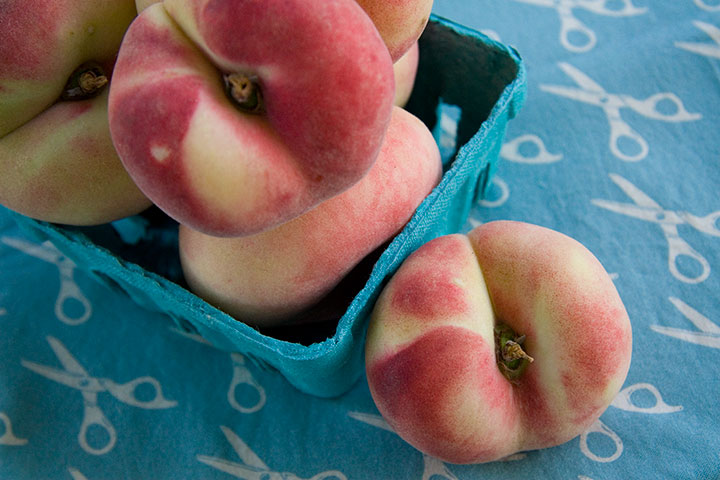
and a handful of beautiful donuts for a snack.
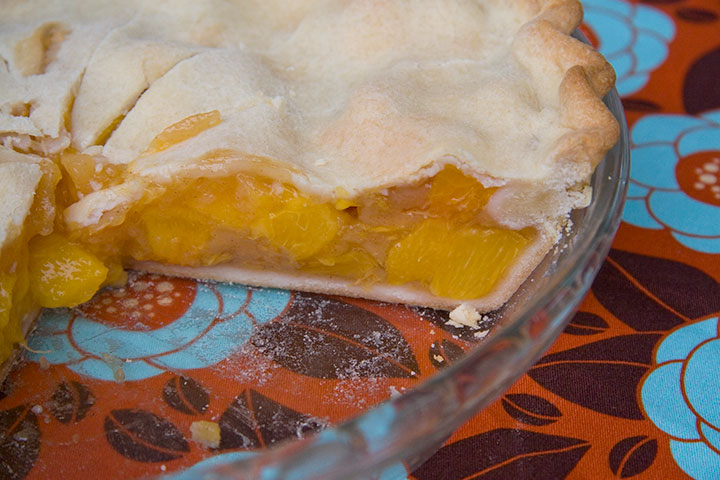
Once he got over his shock at the trunk full of fruit, and set aside a few peaches for the pie I had been begging for, the Tailor canned up an impressive array of preserves. From top left forward: peach jam; ginger-peach chutney (a collaboration with Jessica); sliced peaches in medium syrup; apricot jam; apricot sauce.
My favorite, and the one I can’t wait to taste with a little kugel:
Apricot Jam
(yield: about 10 half-pint jars)
– 2 quarts (8 cups) crushed, peeled apricots
– 6 cups sugar
Now, I’m not going to go into great detail about the whys and wherefores of home canning now, but if canning’s your thing, this will be old hat for you anyway. If not, and you’d like more specific instructions, I’d suggest our favorite resource: Putting Food By.
Anyway. Wash your jars in hot water (most books will tell you to sterilize them, but that’s what the hot water bath at the end is for). Keep the jars hot in a low oven (if you pour hot jam into cold jars, the glass can shatter), and the lids sterile in boiling water until ready to use.
Combine the apricots and sugar in a large stock pot. Slowly bring to a boil, stirring occasionally until the sugar dissolves. Cook at a rapid boil until thick (when the mixture reaches about 220° F, depending on your preference), about an hour, stirring frequently to prevent sticking or scorching.
When the mixture jells, pour it into the hot jars, leaving a 1/4-inch headspace in each. Wipe the jar rims with a clean cloth (any jam left on the rim will prevent the jar from sealing), attach lids, and tighten ring bands. Process in a boiling water bath for 5 minutes (longer if you live at high altitude).
Let cool for 12 hours before removing the ring bands. Store in a dark, dry, cool place.
(Or, if you just can’t wait, pop open a jar and have some toast ready.)
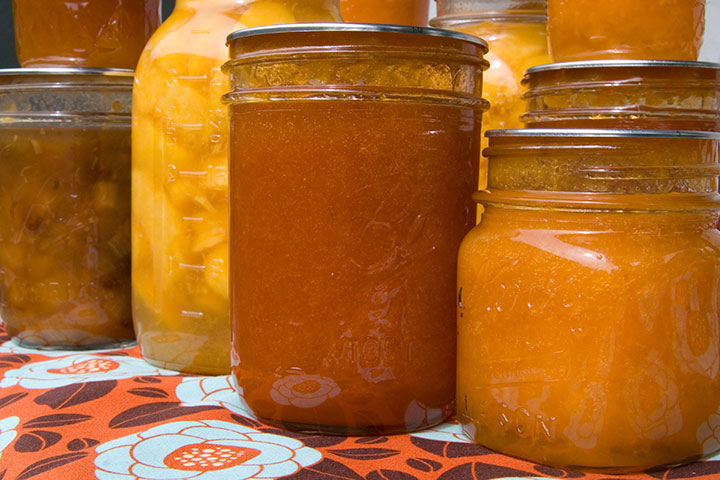
July 25th, 2010
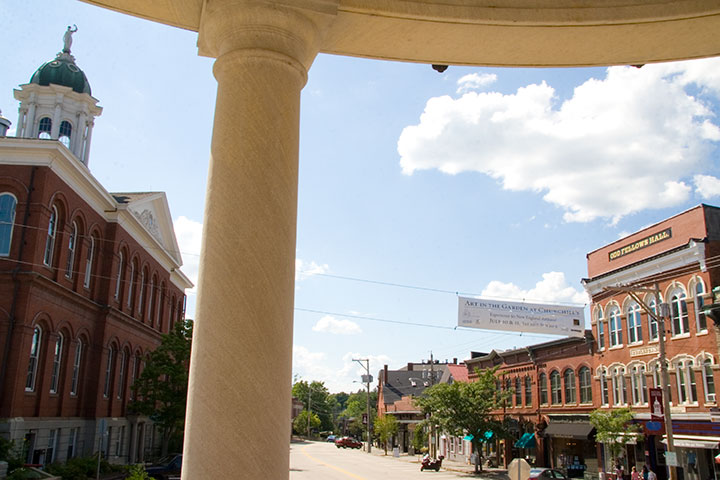
All this talk of stolen vacations, and all I had to do was wait another week. Well, maybe not for a vacation, per se, but certainly a change of scenery. My mother called to let me know that my grandfather, who lived in Exeter, NH, was entering hospice care. Before I knew it, I was on a plane back East. For the first time in my life, it felt like going away rather than going home, but my roots are here nonetheless. So between visits with Bampa, I took a Yankee trip down memory lane.
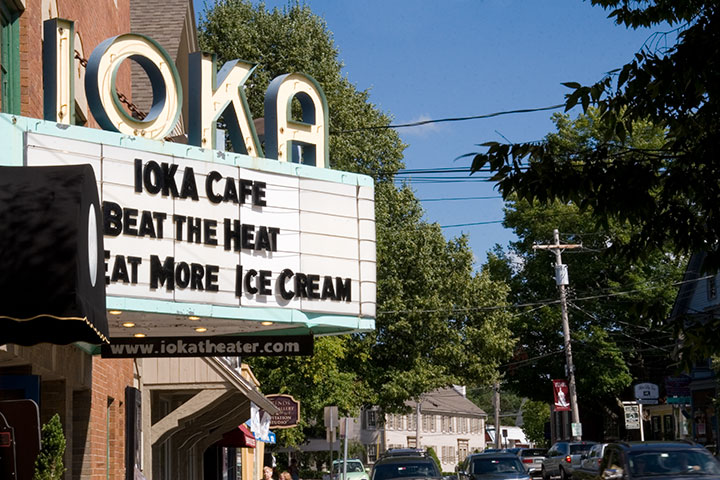
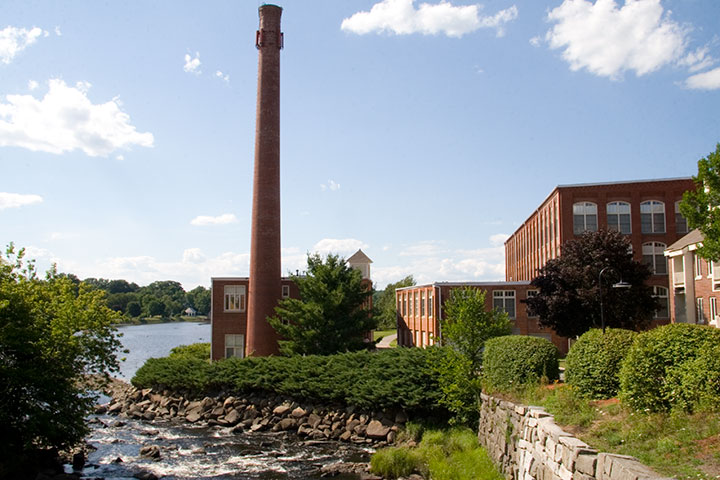
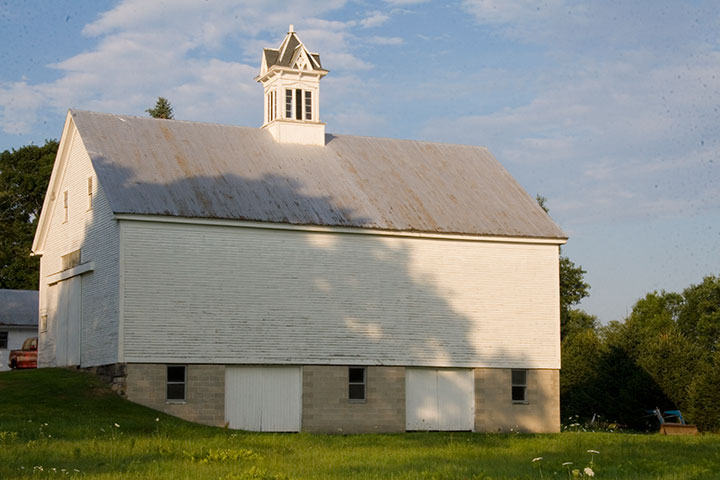
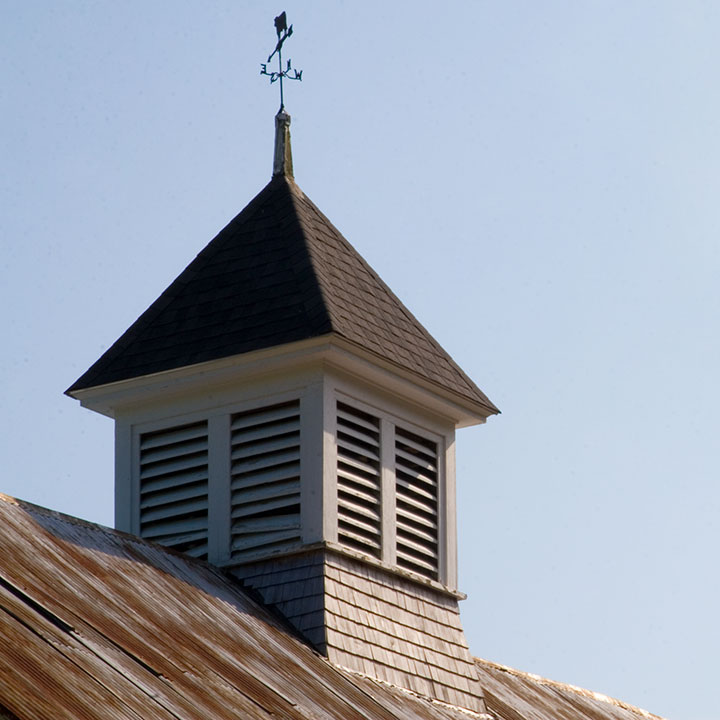
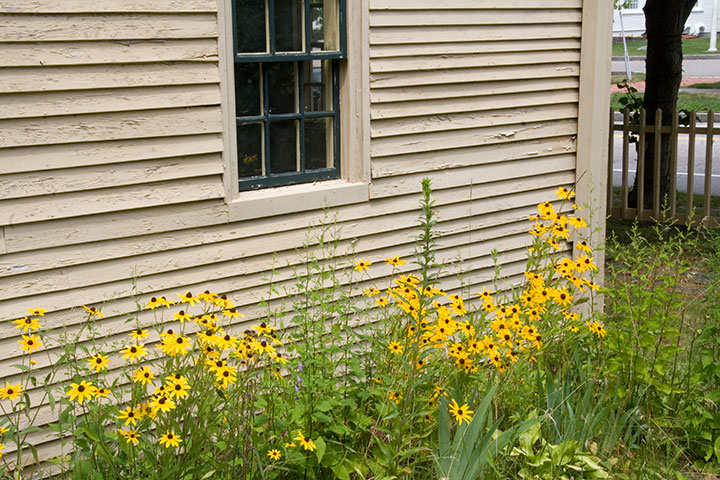
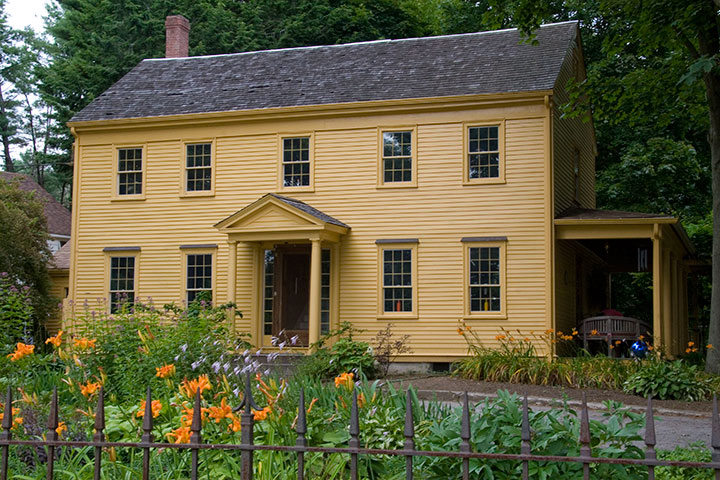
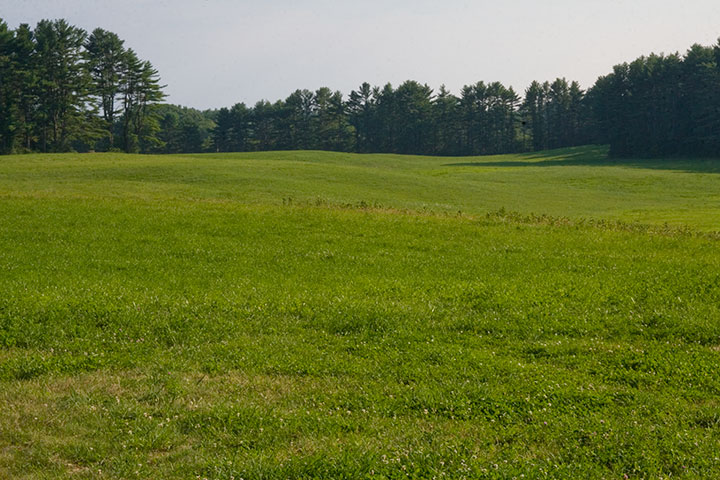
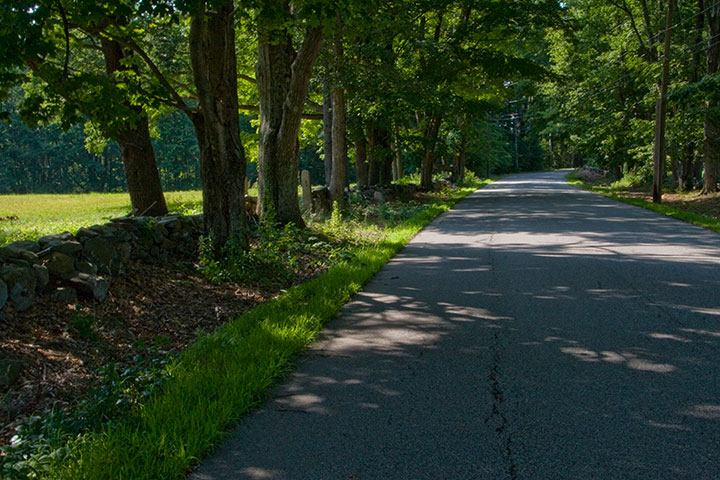
The parts of New England that trigger the most memories for me are the stone walls. Criss-crossing the woods and fields like seams, the walls are some of the oldest remnants of Colonial culture—demarcating property boundaries and connecting living New England with its past. And every time I go back, New Hampshire’s own Robert Frost recites in my head:
Mending Wall
Something there is that doesn’t love a wall,
That sends the frozen-ground-swell under it,
And spills the upper boulders in the sun,
And makes gaps even two can pass abreast.
The work of hunters is another thing:
I have come after them and made repair
Where they have left not one stone on a stone,
But they would have the rabbit out of hiding,
To please the yelping dogs. The gaps I mean,
No one has seen them made or heard them made,
But at spring mending-time we find them there.
I let my neighbor know beyond the hill;
And on a day we meet to walk the line
And set the wall between us once again.
We keep the wall between us as we go.
To each the boulders that have fallen to each.
And some are loaves and some so nearly balls
We have to use a spell to make them balance:
‘Stay where you are until our backs are turned!’
We wear our fingers rough with handling them.
Oh, just another kind of out-door game,
One on a side. It comes to little more:
There where it is we do not need the wall:
He is all pine and I am apple orchard.
My apple trees will never get across
And eat the cones under his pines, I tell him.
He only says, ‘Good fences make good neighbors’.
Spring is the mischief in me, and I wonder
If I could put a notion in his head:
‘Why do they make good neighbors? Isn’t it
Where there are cows?
But here there are no cows.
Before I built a wall I’d ask to know
What I was walling in or walling out,
And to whom I was like to give offence.
Something there is that doesn’t love a wall,
That wants it down.’ I could say ‘Elves’ to him,
But it’s not elves exactly, and I’d rather
He said it for himself. I see him there
Bringing a stone grasped firmly by the top
In each hand, like an old-stone savage armed.
He moves in darkness as it seems to me~
Not of woods only and the shade of trees.
He will not go behind his father’s saying,
And he likes having thought of it so well
He says again, “Good fences make good neighbors.”
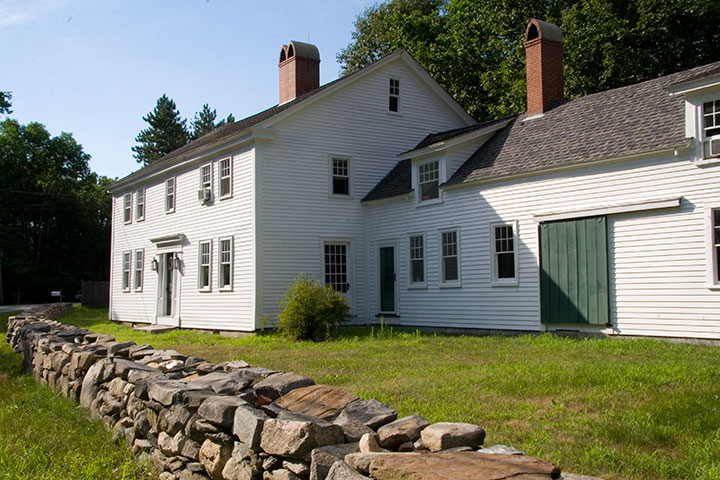
July 17th, 2010
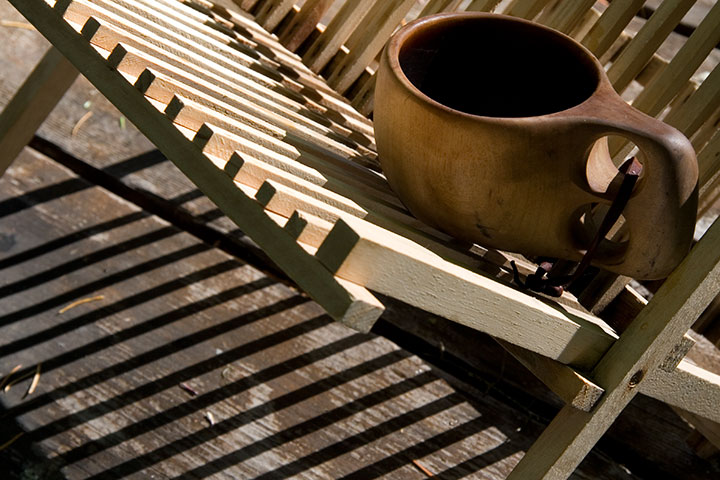
The second part of my little stolen holiday was a little more ambitious: a four-night camping trip with the Tailor in southern Oregon. It was just what the doctor ordered—the perfect prescription for recharging the soul.

We camped in the Rogue River National Forest, in a grove of hemlocks and blooming dogwoods, just downstream from this:
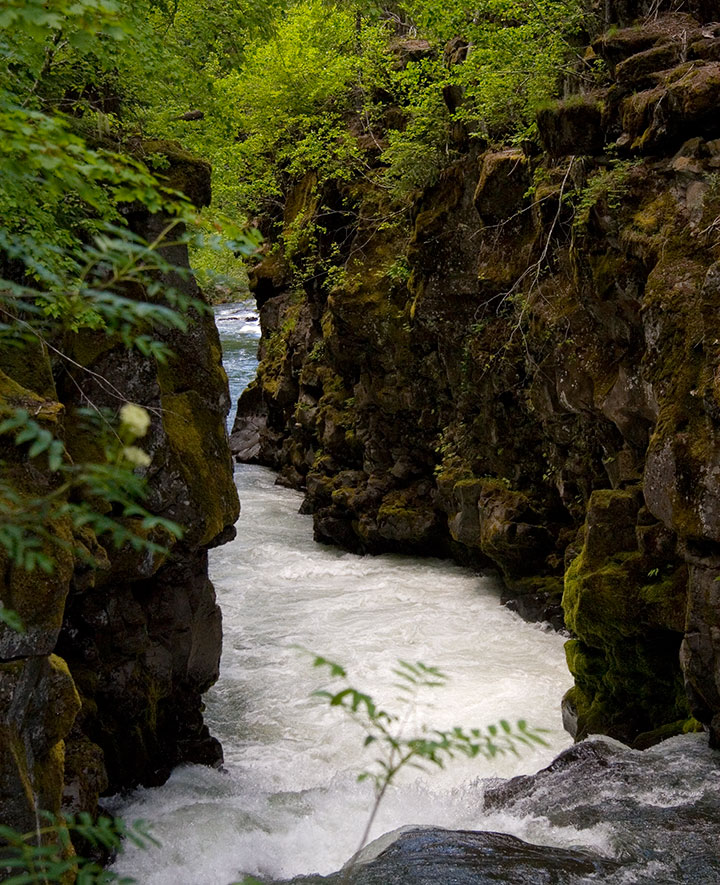
The Rogue is so beautiful that we could have spent the whole trip exploring its banks. Well, if we hadn’t had another destination in mind, that is:
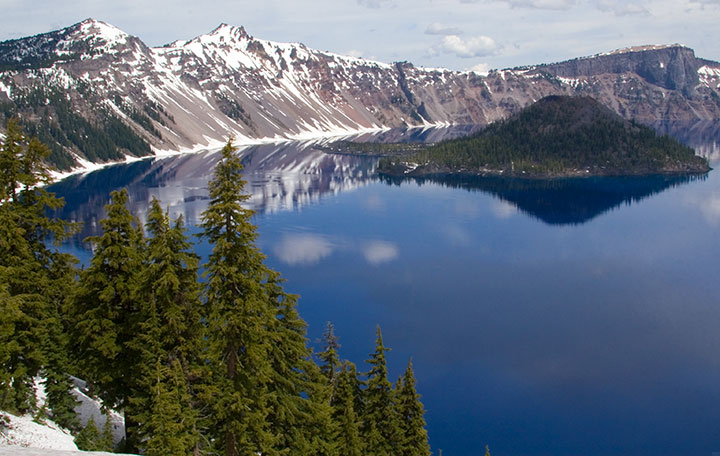
Crater Lake National Park. One of the deepest, clearest lakes in the world, Crater Lake was formed 7,700 years ago by the collapse of Mt. Mazama, after an explosion more than forty times the size of the 1980 eruption of Mt. St. Helens.
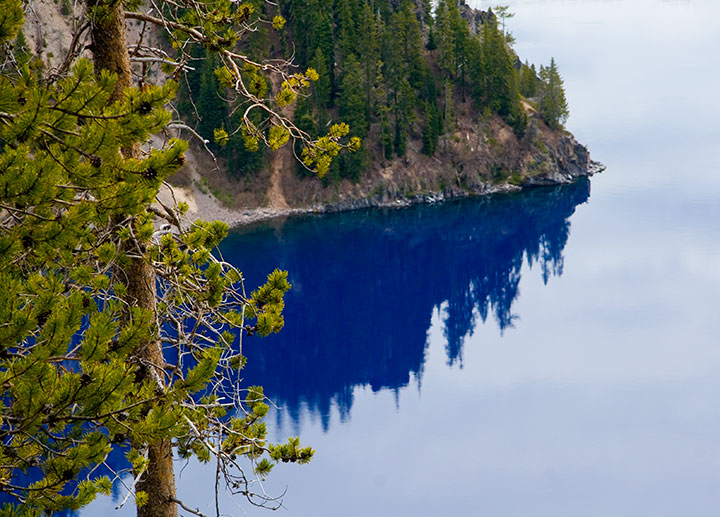
When a group of prospectors stumbled upon it in 1853, and thus became the first white folks to lay eyes on it, they named it Deep Blue Lake. Heh. You can tell they worked hard to come up with that one. Well, at least it’s descriptive.
And accurate. The lake is so impossibly blue because of its depth; when the sun’s rays refract upon hitting the water, red and green light are absorbed in the depths, while only the blue light (which has a shorter wavelength) reflects back to the surface. So the lake is blue even on a cloudy day—as you can see.
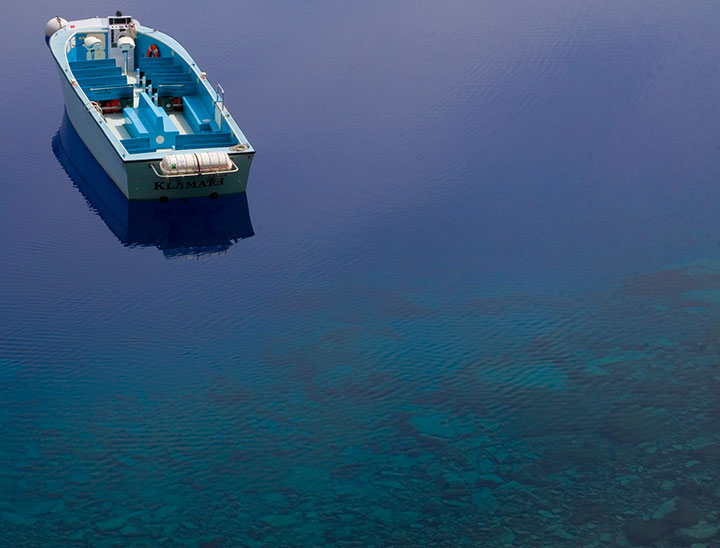
We were a week too early for the boat tours to open for the season, but we hiked down to the water anyway. The rangers like to say that the trail is “one mile down, ten miles back up” (it’s funny because it’s true. Oy.), but the experience is well worth the huffing and puffing. Next time I’ll bring bug spray, though. Note to self.
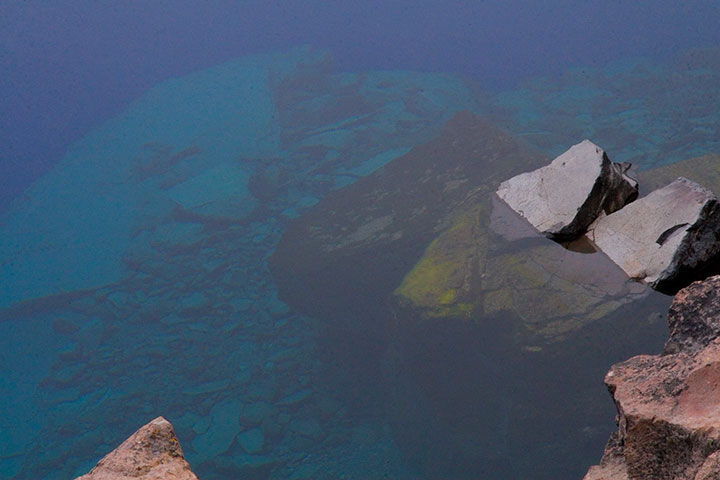
Did I mention that it’s blue? And deep? Maybe those prospectors were onto something.
The photo above doesn’t come close to doing it justice (none of my photos do), but the sheer depth and clarity of Crater Lake was mind-boggling. It’s impossible to tell how deep the rocks in the upper left corner of the photo are, but according to the topo map in front of me, it’s quite a ways down. Because there are no streams in or out of Crater Lake, there’s nothing to muddy or disturb the water—objects are visible nearly 150 feet down. Deep Blue indeed.
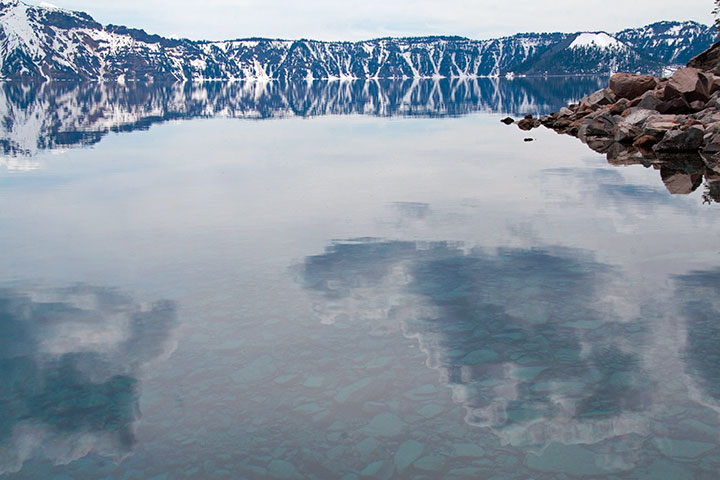
The thing that really got to me was the fact that the lake was both a bottomless pit and a perfectly-flat mirror, depending on which way you looked at it. That’s probably why this is my favorite photo of the trip—somehow the camera managed to look at things both ways.
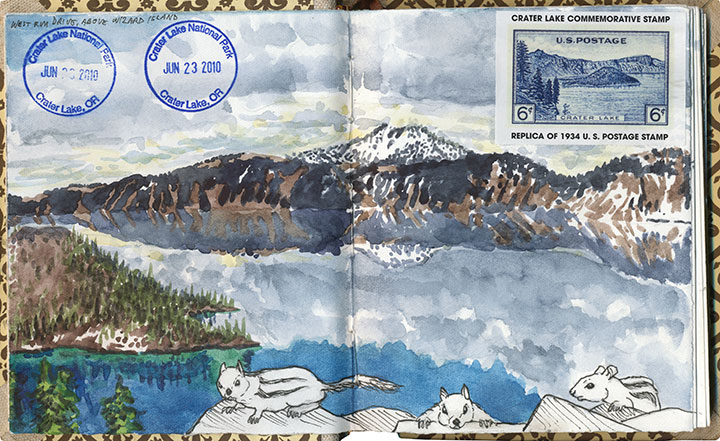
I think I must have been trying for the same kind of perspective with this drawing—and with far less success, I’m afraid. My brain broke when I tried to analyze the thing graphically. Ah, well. (The ground squirrels were fun, though.)
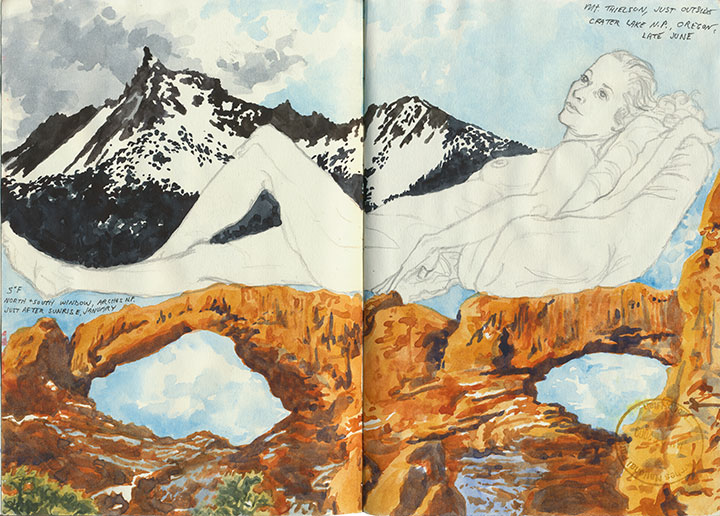
This one worked out a lot better—and it didn’t hurt that the figure and desert drawings were already there to help things along.

Speaking of deserts, we also saw a whole lot of barren landscapes to balance out all this snow and water. For one thing, we drove down and back on the eastern (the arid leeward) side of the Cascades. For another, there are places where all this ancient volcanic destruction still looks like it happened last year. This is the Pumice Desert, on the north side of the National Park.
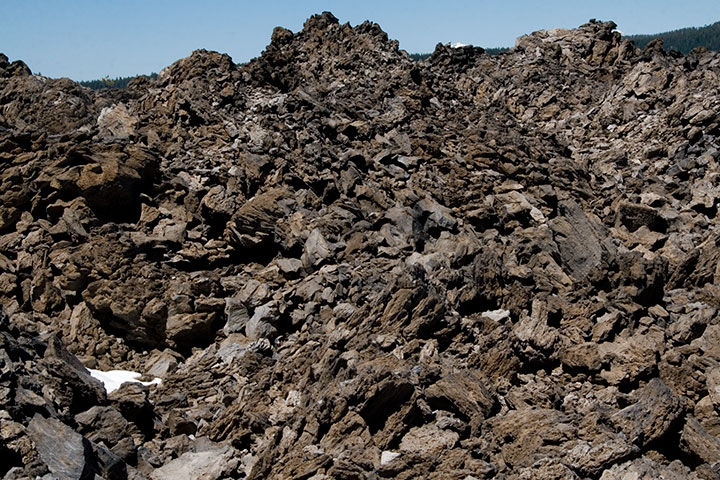
And this is something else again. Now, I loved everything we’d seen at the Park, but my absolute favorite part of the trip was this place, which made for a side trip on the way home. This is just south of the Newberry Caldera, another collapsed volcano formed in precisely the same way as Crater Lake, but on a much smaller scale. A trail winds up and through the rock-pile hills—a landscape that seems plucked from the surface of the Moon.
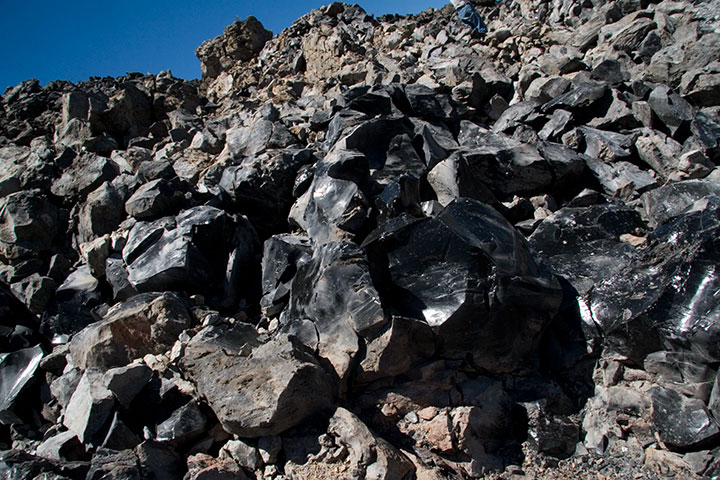
If you step closer, however, you’ll see the light glinting off of each rock and pooling in every crevice. In full sunlight the entire hillside sparkles like a gigantic, blinding treasure hoard.
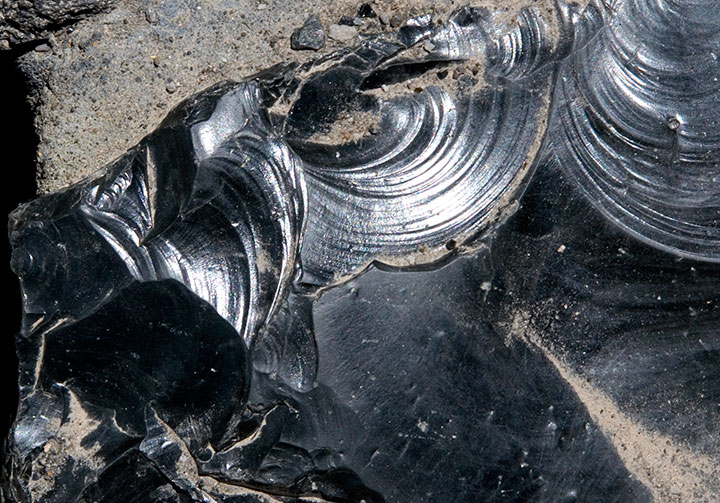
The rocks shine because they’re not rocks—they’re glass. This is obsidian, a natural glass formed when lava cools rapidly without crystallizing. Besides being gorgeous and just about the coolest thing ever, obsidian is extremely useful as a surgical tool. Obsidian scalpels can be sharpened to a near-microscopic edge (because of the not-forming-crystals thing), and the incisions they make produce narrower scars than steel scalpels do. Neat, huh? Anyway, obsidian flows of this size are quite rare, so if you get the chance to walk through one—take it.
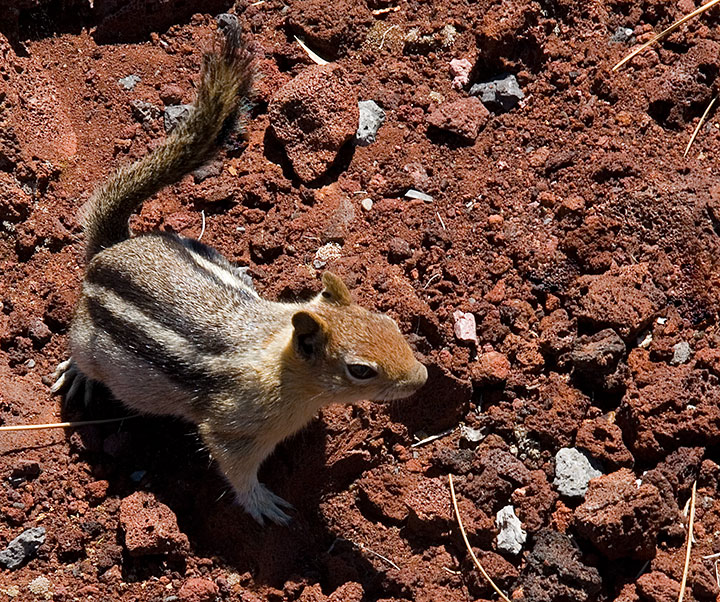
I could have stayed all day with the obsidian (which, by the way, is called the Big Obsidian Flow, a name that gives Deep Blue Lake a run for its money), but we were still several hours from home (we figured we’d have to spend the first hour stepping carefully around all the ground squirrels that had appeared at our feet), and we still had one more stop to make:
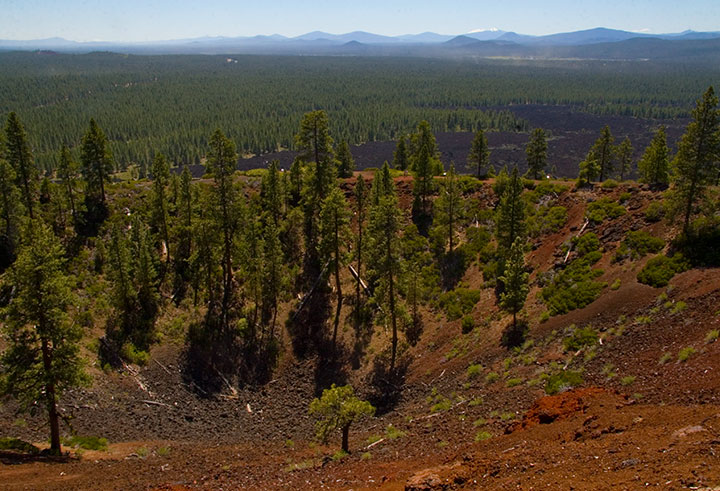
Lava Butte, from which it was possible to see pretty much every darn volcano in Oregon, and even Mt. Adams in Washington. I won’t bore you with the 200 other photos I shot from up there, but let’s just say I was in suitable awe.
Oh, and for the record? All of these volcanoes are still active. How freaky is that? Or maybe it isn’t, and I just have volcanoes on the brain, but I think it’s freaky.
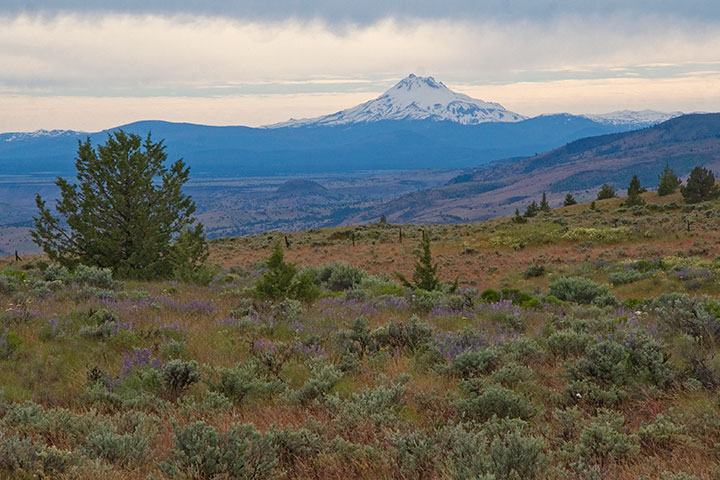
I lost count of all the volcanoes we spied, but the rest of the numbers were easy to tally:
Five glorious days.
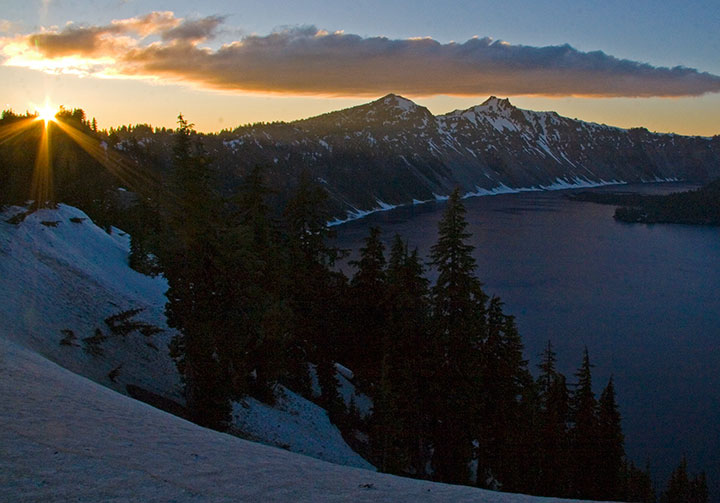
Five breathtaking sunsets.
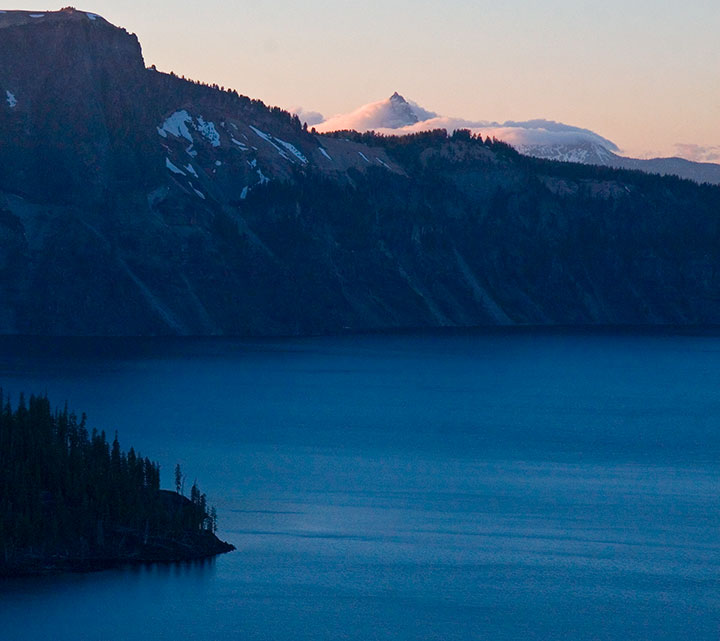
Five thousand smiles.
July 11th, 2010
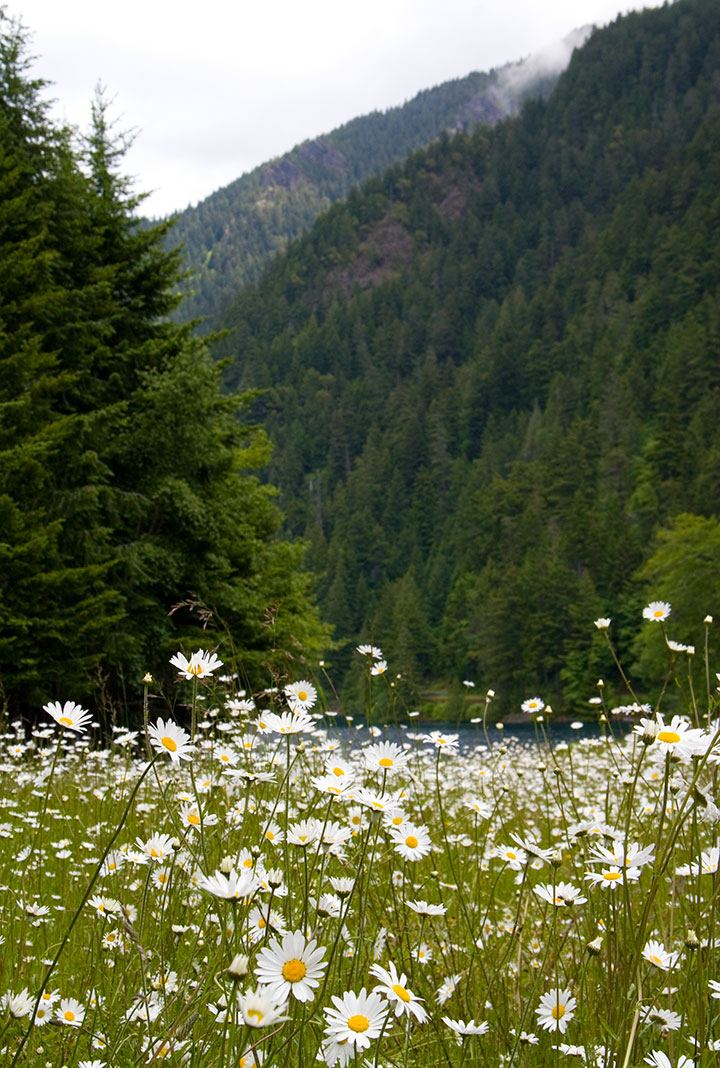
Since I’ll be a hermit for most of the rest of the year while I finish my Rainier book, I tried to sneak a little stolen summer vacation time into June. If I was going to lock myself indoors during our sunniest season, I wanted as many mountains, oceans, flowers and skies as I could cram into a week first.
For the first few days we had a couple of friends staying with us. Since one of them was visiting from Colorado, and wanted a change from the hot, dusty summer back home, we took a day trip to the Olympic Peninsula for a good dose of lush greenery.
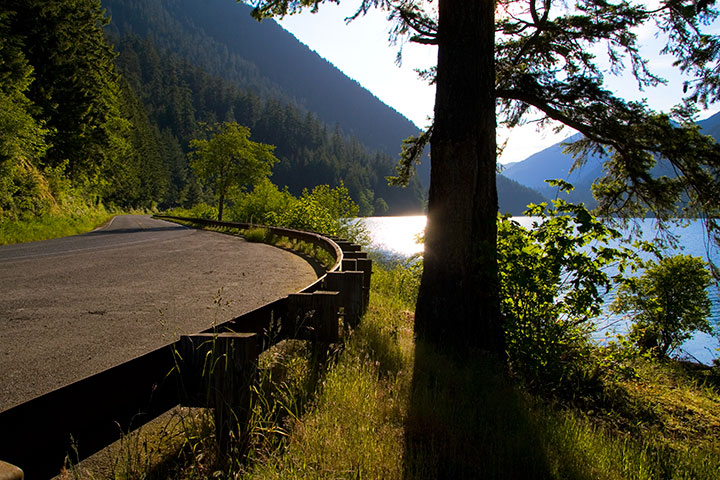
The West Coast highway, U.S. Route 101, ends with a 300-mile, two-lane meandering loop around the Peninsula. It’s the only thoroughfare on the entire Peninsula, and a treacherous road, full of hairpin curves, patches of fog, logging trucks and landslide-prone slopes—but the scenic beauty makes the drive a spectacular adventure.
We took the northernmost leg of the road that day. Just west of Port Angeles it winds through a tunnel of trees as it hugs the shore of Lake Crescent, where we stopped for a picnic lunch beside the impossibly blue water.
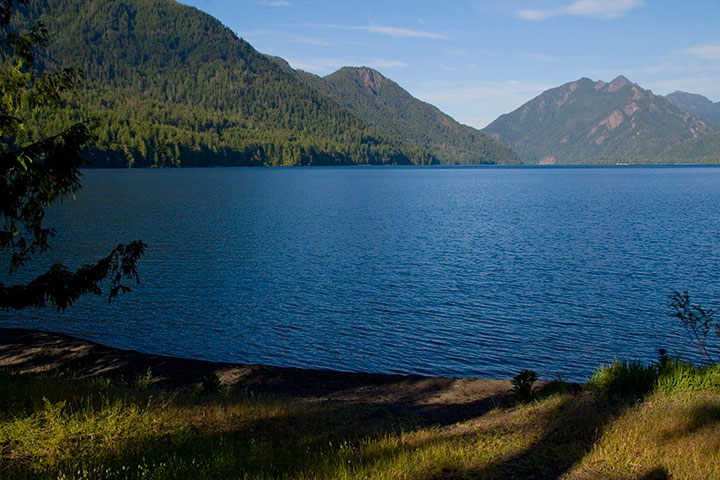
We were tempted to spend the whole day at the lake, but a bigger surprise lay down the road: the Hoh Rain Forest, one of the largest of America’s rare temperate rain forests. I’d also bet it’s the most beautiful—if it weren’t a four-hour drive away, I’d go every day.
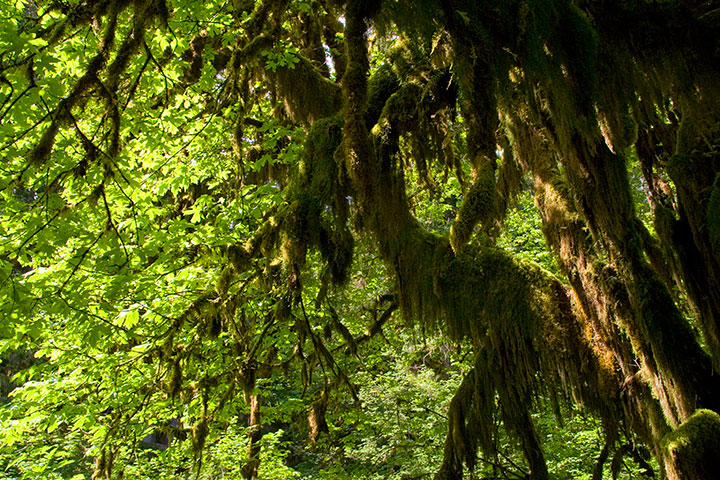
I had only ever seen the place in a downpour (big surprise—they get up to fourteen feet of rain and over 300 cloudy days a year), but as soon as we arrived that day … the sun came out.
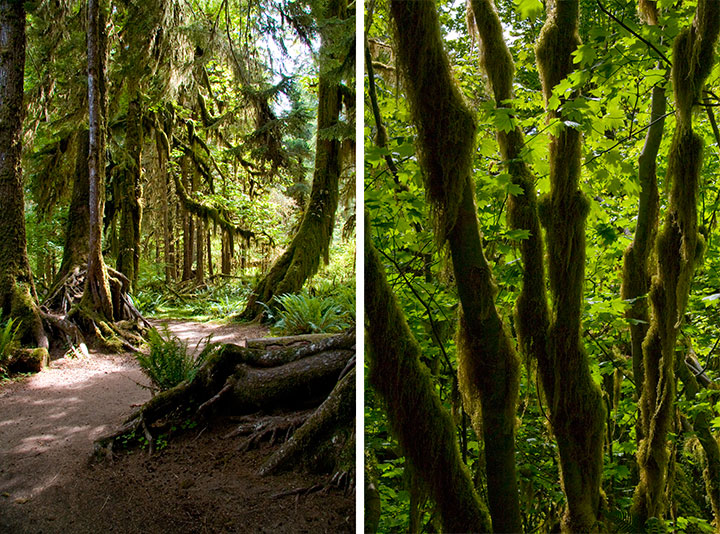
I almost didn’t recognize the place.
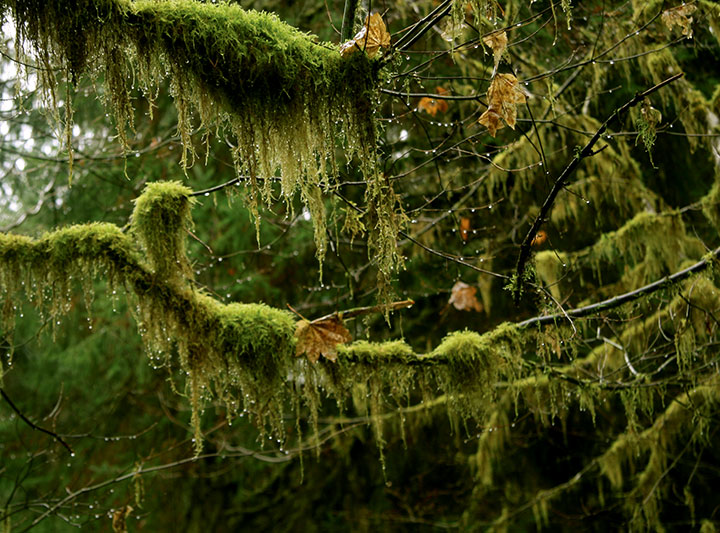
The last time I was there, droplets hung from every surface and everything shimmered with a gossamer silver glow.
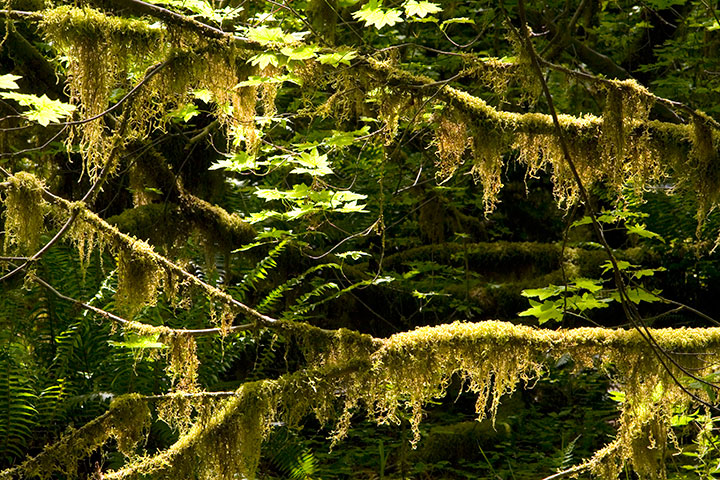
This time, the glow turned to spun gold and bottle green.
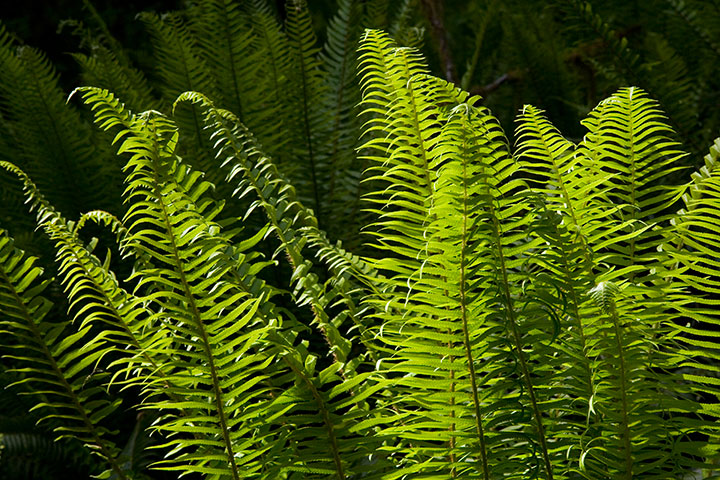
As always, though, every branch was festooned with cat-tail moss, and sword ferns carpeted the forest floor.
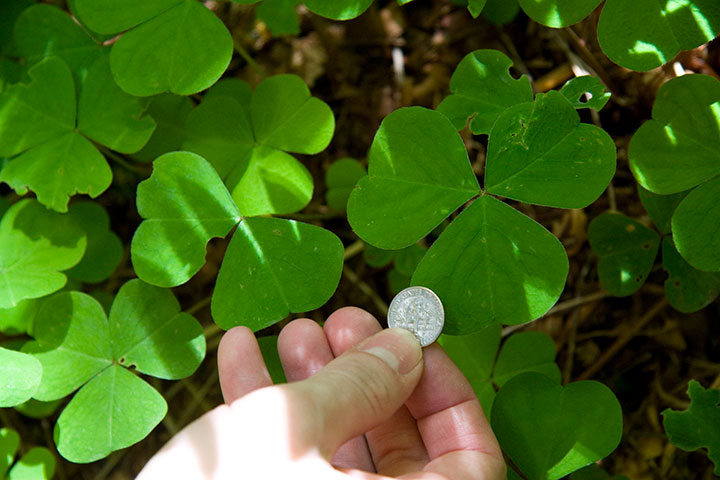
And the clover leaves were the biggest I’ve ever seen.

So were the trees.
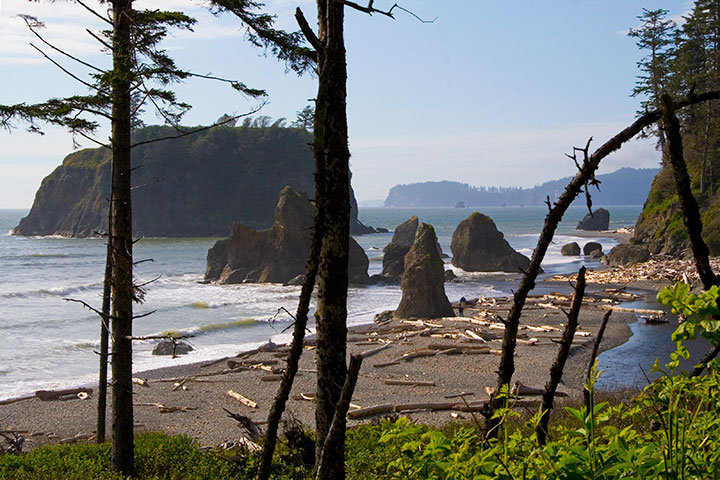
The best part about our road trip was the fact that it was nearly Midsummer; we still had hours of sunshine left to us. Next on the itinerary: Ruby Beach. It was a short hike down to the water, past Queen Anne’s lace and just-ripening salmonberries, with the roar of the Pacific ringing in our ears.

That bizarre stamp is still the only banana slug I’ve ever seen, alas. The search continues!
I sat down to do a watercolor,
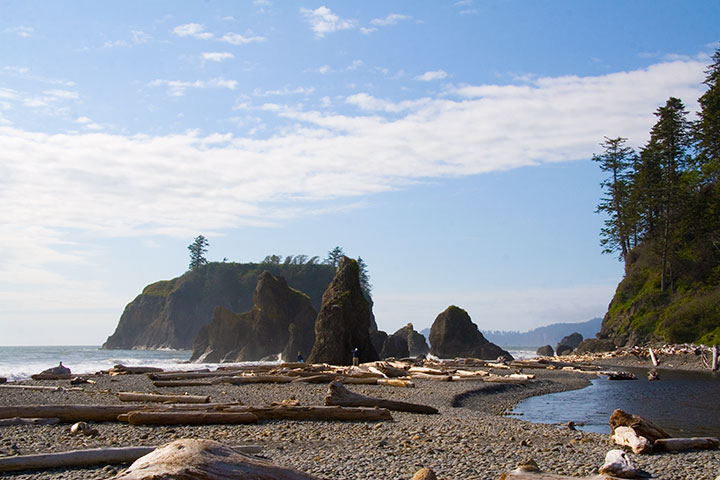
while Ethan moved along the shore to explore the sea stacks,
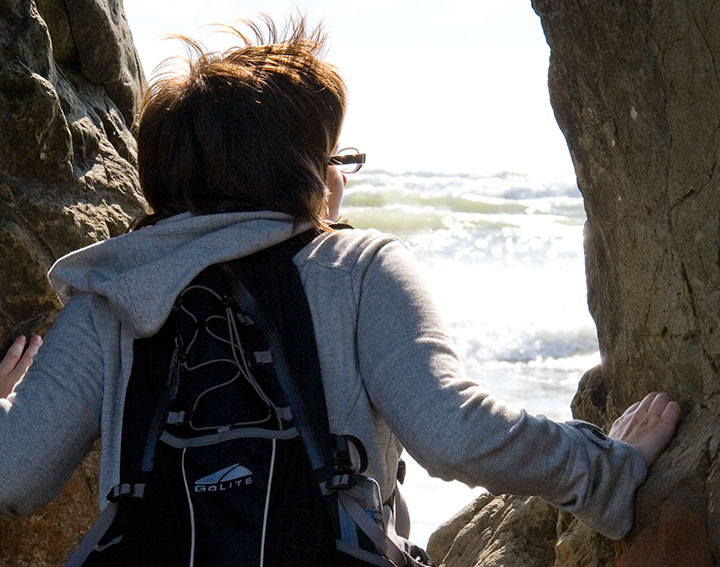
and Nicole stopped to take in the view.
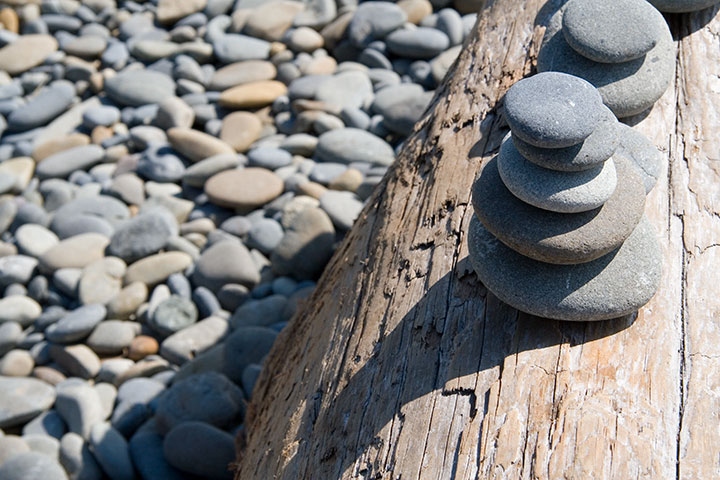
We made a quick contribution to the collection of obos on a nearby driftwood log, and set off for home.
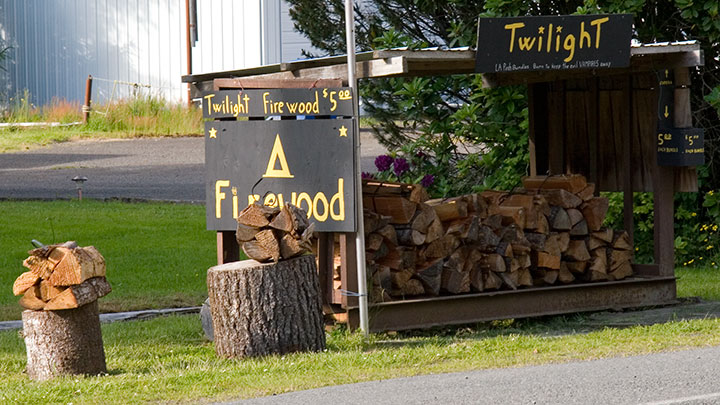
Yes. Twilight firewood. For setting those vampire books on fire, I think.
On the way back we stopped for a little absurdity. Route 101 passes through Forks, home of a certain infamous vampire series; we couldn’t resist stopping to take photos of the hilarious roadside tie-ins that had popped up since the last time I passed through. I’d never read the books, but when Nicole told me that these vampires only eschew sunlight because it makes them sparkle … well. My morbid curiosity got the better of me, and before I could stop myself, I read the whole blasted page-turning accident scene of a series the following week. Ugh.
And, uh, yeah. They sparkle. And whine and brood and mope. Curiosity satisfied.
I digress. Sorry.
By that point we were starving—but not in the mood for Twi-dogs or whatever punny food might be expected in a place with a name like Forks. So I suggested we hang on a little longer and head to Port Townsend, where I knew of a fantastic seafood restaurant.
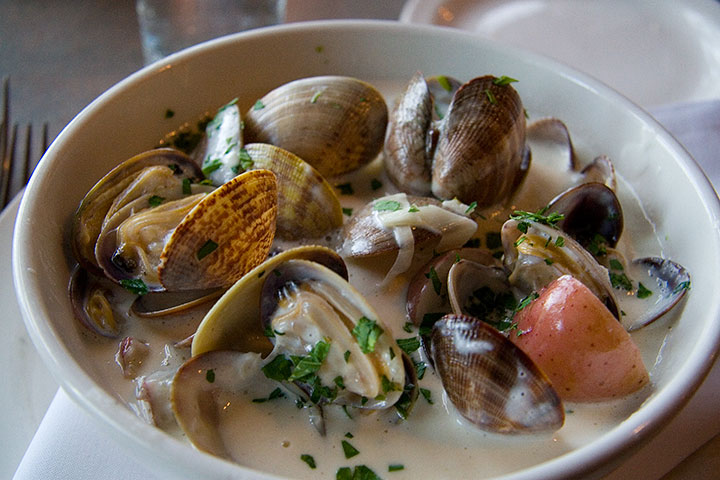
An hour later, we had traded Forks for spoons, and were digging into our bowls of the tastiest, freshest, localest carn-starn Manila clam chowder on the West Coast. And changing my definition of road food in the process.
Oh, who am I kidding? You know that whole trip was for the chowder, right?

![Chandler O'Leary [logo]](https://chandleroleary.com/wp-content/themes/chandleroleary/images/logo.png)














































































































